Chaos and Caviar
Winning the fight for science in Brazil’s fisheries
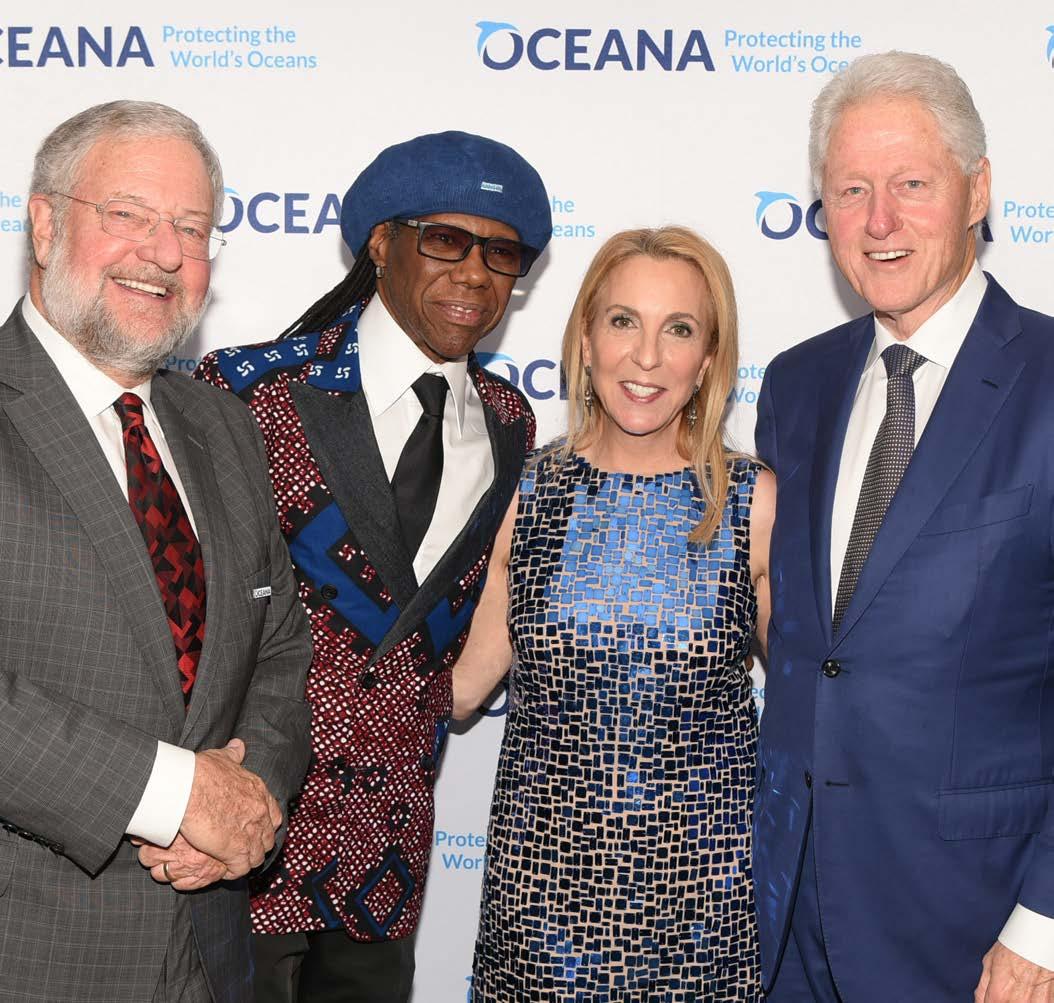
Eyes on the Deep Protecting Canada’s underwater mountains
California Wildlife Wins
Destructive fishing nets phased out in the Golden State
WINTER 2018 OCEANA.ORG
Magazine
©Oceana/Rob Rich
Board of Directors
Valarie Van Cleave, Chair
Ted Danson, Vice Chair
Diana Thomson, Treasurer
James Sandler, Secretary
Keith Addis, President
Gaz Alazraki
Monique Bär
Herbert M. Bedolfe, III
Sydney Davis
César Gaviria
Mária Eugenia Girón
Loic Gouzer
Jena King
Sara Lowell
Stephen P. McAllister
Dr. Daniel Pauly
Dr. Kristian Parker
David Rockefeller, Jr.
Susan Rockefeller
Simon Sidamon-Eristoff
Heather Stevens
Dr. Rashid Sumaila
Sam Waterston
Jean Weiss
Cover
President Bill Clinton and Nile Rodgers, shown with Oceana board members David and Susan Rockefeller, honor ocean advocates at Oceana's October New York Gala
Ocean Council
Susan Rockefeller, Chair
Kelly T. Hallman, Vice Chair
Dede McMahon, Vice Chair
Violaine Bernbach
Carolyn Marks Blackwood
Keely and Pierce Brosnan
Deborah Buck
Richard M. Burnes, Jr. Amy and Gary Churgin
Vin Cipolla
Barbara Cohn
Ann Colley
Andrew Davis
Sydney Davis
Michael Dershewitz
Edward Dolman
Barbara Ettinger and Sven Huseby
Lise Evans
Christina Falco and Michael Frumkin
Kay Fernandez
Joanna and Brian Fisher
Kelsey Grammer
Carolyn Groobey Marjorie Harris
Julie Hill
Carey Hotchkis
Hardy Jones
Angela and J. Stephen Kilcullen
Arlene and Robert Kogod Slane Holland Lightburne
Ann Luskey
Willa and Ted Lutz
Tiffany Moller
Aaron Peirsol
Nicole Polizois
Perri and Mario Procida
Lori and John Reinsberg
David Rockefeller, Jr.
Anne Alexander Rowley
Eve Kornyei Ruffato
Andrew Sabin
Jennifer Small and Adam Wolfensohn
Danielle Steakley
Sutton Stracke
Julie Tauber McMahon
Mia Thompson
Dr. David Treadway
Susan Trees
Toby Usnik
Jennifer Schwab Wangers
David Max Williamson
Raoul Witteveen
Oceana is published by Oceana Inc. For questions or comments about Oceana, or to subscribe to Oceana, please call our membership department at +1.202.833.3900, e-mail membership@ oceana.org or write Oceana, Member Services, 1025 Connecticut Ave. NW, Suite 200, Washington, DC 20036 USA
Oceana Staff
Chief Executive Officer
Andrew Sharpless President Jim Simon
Chief Scientist & Strategy Officer
Michael Hirshfield, Ph.D.
Chief Policy Officer, North America Jacqueline Savitz
Senior Vice President & Executive Director, Europe Lasse Gustavsson
Senior Vice President, Strategic Marketing & Communications Matthew Littlejohn
Vice President, Belize Janelle Chanona
Executive Director, Oceana Canada Joshua Laughren
Vice President, Mexico Pedro Zapata
Vice President, Peru Patricia Majluf, Ph.D. Vice President, Chile Liesbeth van der Meer
Vice President, Philippines Gloria Estenzo Ramos, J.D. Vice President, Brazil Ademilson Zamboni, Ph.D.
Vice President, Development Nancy Golden
Chief Financial Officer Christopher Sharkey
Chief of Staff Leslie Jones
Deputy Vice President, U.S. Pacific Susan Murray
Oceana’s Privacy Policy: Your right to privacy is important to Oceana, and we are committed to maintaining your trust. Personal information (such as name, address, phone number, e-mail) includes data that you may have provided to us when making a donation or taking action as a Wavemaker on behalf of the oceans. This personal information is stored in a secure location. For our full privacy policy, please visit Oceana.org/privacypolicy.
2
Please Recycle.
Editorial Staff Editor Allison Guy Designer Karen Radewald
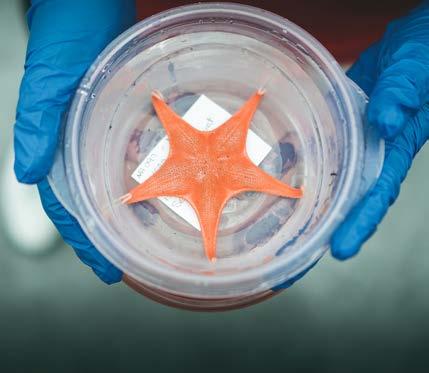

Features Departments To help you navigate Oceana’s work, we’re introducing icons for our five major campaigns. Look for them throughout the magazine to learn more about what Oceana focuses on. Curb Pollution Stop Overfishing Reduce Bycatch Protect Habitat Increase Transparency A boon for Brazil’s ocean 12 CEO note In Indonesia, proof that fisheries law enforcement and transparency work For the win Destructive nets phased out in California, new marine protections in Malta and more News & notes Growing opposition to offshore oil, a new shark species and more Q&A Marcella Cacci of One Ocean Beauty Chaos and caviar Winning the fight to bring science to Brazil’s struggling fisheries Eyes on the deep Expedition shows why Canada’s underwater mountains need protection Oceana victories A timeline of success Supporter spotlight Burgess Yachts Ask Dr. Pauly Why we need a global ban on the shark fin trade Events New York Gala honors longtime ocean advocates Fin win Mark Bittman shares a tempting anchovy recipe Parting shot Sun-dried fish at the Dipolog City Market 5/ Protecting Canadian seamounts 6/ 8/ 10/ 12/ 16/ 26/ 27/ 28/ 30/ 32/ 34/ 16 ©Oceana/Matias Quintenos ©Fisheries and Oceans Canada
Please Give Generously Today
Your contribution will help ensure our oceans are vibrant and sustainable. Help us save the oceans and feed the world.
Call us today at (202) 833-3900, email us at info@oceana.org, visit www.oceana.org/give or use the envelope provided in this magazine to make a donation. Oceana is a tax-exempt 501(c)3 organization and contributions are taxdeductible to the fullest extent of the law.

Your support would be fin-tastic.
©Ethan Daniels/Shutterstock 4
Suppose you were given the job of restoring and protecting your country’s ocean so that your fellow citizens could always get lots of affordable fish to eat. Imagine that your country’s ocean is one of the world’s 10 most productive. Now comes the hard part: Your national ocean is enormous, encompassing an area 3,181 miles east to west and 1,094 miles north to south, and includes more than 13,000 islands, 6,000 of which are inhabited. Over 260,000,000 of your fellow citizens live across this vast space. Fishing is a key source of food for nearly everyone, especially so for poor people. Yet your ocean is regularly invaded by illegal vessels operating out of other countries, illegally stealing your fish in brazen violation of both international and domestic laws. And the red and gold flag flying on some of those illegal vessels is Chinese.
This is not a hypothetical case. It was the situation facing Susi Pudjiastuti, who on October 27, 2014 took office as Minister of Marine Affairs and Fisheries of Indonesia. What she did is an inspirational example of effective leadership in the service of her country, her fishers and the ocean. And an article in April’s edition of the science journal Nature Ecology & Evolution forecasts that the Indonesian ocean will be more abundant thanks to her good work.
What did she do? She seized illegal fishing boats, hundreds of them. Together with the Indonesian Navy, she then destroyed many of them — 318, as of earlier this year — inviting the world’s press to cover some of the explosions, making sure criminal fishers everywhere got the message loud and clear. She also mandated that thousands of fishing vessels in Indonesian waters, both foreign and domestic, be fully trackable by satellite, and freely visible to the world in near real time on Global Fishing Watch. She imposed a moratorium on fishing by foreign vessels and stopped transshipments of fish at sea by foreign vessels.
What do we learn? Vigorous enforcement combined with transparency produces effective deterrence.
In late October, I traveled to Indonesia to encourage the world’s fishing nations to follow Minister Susi Pudjiastuti’s lead.
At the annual global Our Ocean Conference, founded four years ago by U.S. Secretary of State John Kerry, and hosted this year by Indonesia, a new round of action commitments were made by coastal countries and ocean conservationists. Speaking on the Sustainable Fisheries Panel together with Minister Susi Pudjiastuti and four other government officials from leading fishing countries, I called special attention to the need for countries to publish their vessel monitoring system (VMS) satellite data, just as Indonesia has. I committed Oceana to making sure that more countries do this, promptly.
Peru, where Oceana’s team made this goal a top priority, just became the second country in the world to publish its VMS data. It is now benefiting from the deterrence that comes with putting thousands of fishing vessels on notice that what they are doing in Peru’s ocean is now visible to the world.

To paraphrase U.S. Supreme Court Justice Louis Brandeis: Sunlight is the best disinfectant.
While the U.S. Senate considers a bill to gut the Magnuson-Stevens Act, a law that has restored dozens of once-overfished seafood species, it is encouraging to see that science-based, forceful and effective conservation is still very much alive on the other side of the world. Happily, it’s not the only good news this issue of our Oceana magazine brings you. Please take in the other promising developments that follow in these pages.
Your contributions make this all possible. Thank you!
Lastly, an important reminder. Global Fishing Watch, readers of this magazine will remember, was launched by Oceana, Google and Skytruth. Your contributions made that possible, along with generous support from the Leonardo DiCaprio Foundation, Bloomberg Philanthropies, Wyss Foundation, Marisla Foundation, Waterloo Foundation, Adessium Foundation, Oceans 5, Oak Foundation and the Walmart Foundation.

For the Oceans, Andrew Sharpless CEO Oceana

WINTER 2018 | Oceana.org5 Note
©Shutterstock/JamesChristG
For the Win
In California, swordfish fishermen using drift gillnets end up throwing back more than half of what they catch.
California’s new drift gillnet law is a win for wildlife and sustainable seafood
Drift gillnets catch swordfish — and a whole lot of other creatures as well. These mile-long, nearly invisible mesh nets snag not only fish, but whales, dolphins and sea turtles too, injuring or drowning them in the process. In California, fishermen who use drift gillnets end up tossing back more than half of everything they catch.
This wasteful situation is about to improve. In late September, California Governor Jerry Brown signed a law that will phase out the use of drift gillnet fishing for swordfish, and will establish a buyout program and incentivize the use of cleaner fishing gear.
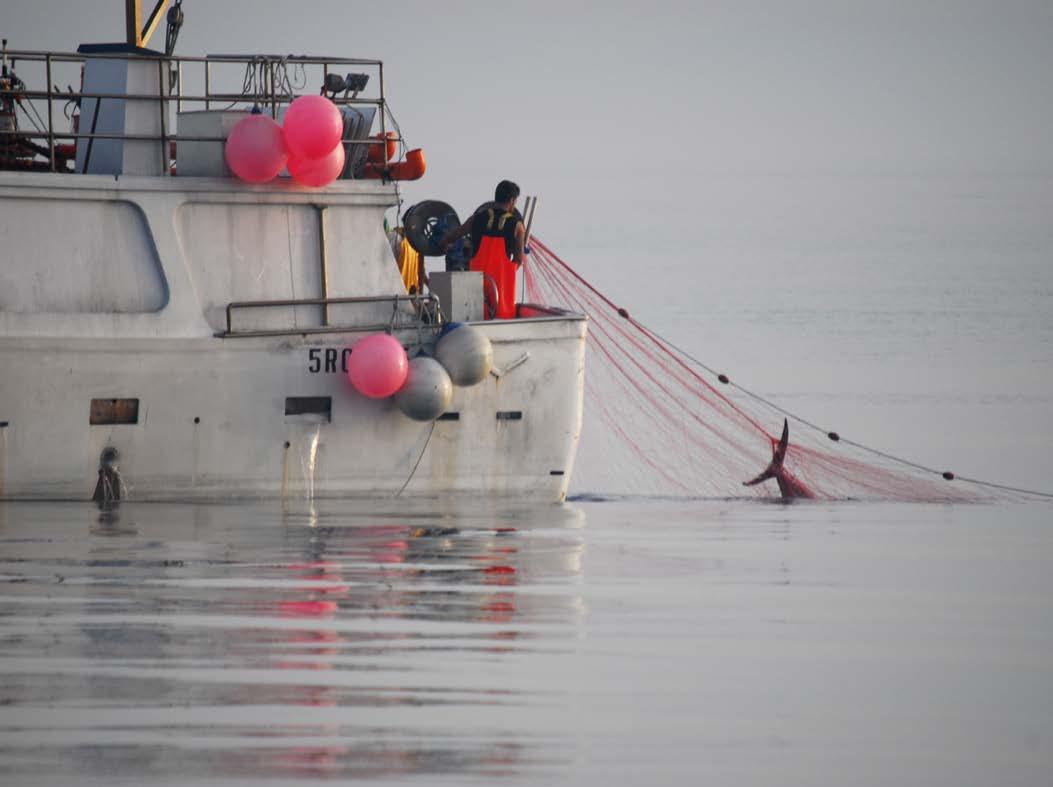
Fortunately, a far more responsible fishing method, called deep-set buoy gear, already exists. With buoy
gear, baited hooks are set between 800 and 1,200 feet deep, well below the normal depth range of sea lions, dolphins and turtles. Thanks to floating surface indicators, fishermen can detect and bring their catch to the surface in minutes and release it, alive, if it’s not a swordfish. Buoy-gear swordfish isn’t mangled by nets, so it’s more valuable — a winwin for fishermen and for conservation.
“This is literally an enormous net benefit for endangered whales, sea turtles and other marine life, as well as responsible fishermen, coastal communities and seafood consumers,” said Susan Murray, Oceana’s deputy vice president. “There is no longer room in our oceans for any fishery that throws away more than it keeps.”
6
©Oceana/Juan Cuetos
Breakthrough in Brazil: Oceana wins multiple victories in key fishing nation
Bottom-trawling banned in Rio Grande do Sul Rio Grande do Sul, the southernmost state in Brazil, was once one of the country’s most important fishing regions. But overfishing, combined with destructive fishing methods like bottom trawling, have shuttered more than 90 percent of the state’s fishing businesses in the last 30 years.
In early September, Rio Grande do Sul approved legislation to ban bottom trawling within its state waters, an area extending along the 620-kilometer coast out to 22 kilometers from shore — a total of 13,000 square kilometers. Fishers hope that the new legislation, the result of advocacy from Oceana and allies, will help restore Rio Grande do Sul’s once-abundant fisheries.
With new recovery plans, Brazil’s struggling fish get a second chance
In August, the Brazilian government released regulations setting rules for the recovery and sustainable use of seven fish and crustaceans on the national “red list” of threatened species. Oceana promoted the adoption of these measures, liaising with fishing interests and advising government officials on the best available science. “This is the first time effective recovery strategies have been implemented for red list species,” said oceanographer Ademilson Zamboni, the head of Oceana in Brazil. “We believe that this will result in actual change for these species in Brazil, eventually allowing their recovery.”
In Santa Catarina, mullet quotas are working Mullet, or tainha, is a key fish for food and income in southern Brazil, but until this year, it had never benefited from sciencebased management. Oceana, fishermen and government officials worked together to implement mullet quotas in the state of Santa Catarina, a key tainha fishing ground. In September, a government monitoring committee concluded that while fishermen exceeded the 2018 quotas, the system successfully staved off unsustainable catch levels — proof that Oceana’s mullet strategy was a good solution.
35 percent of Malta’s waters are now protected
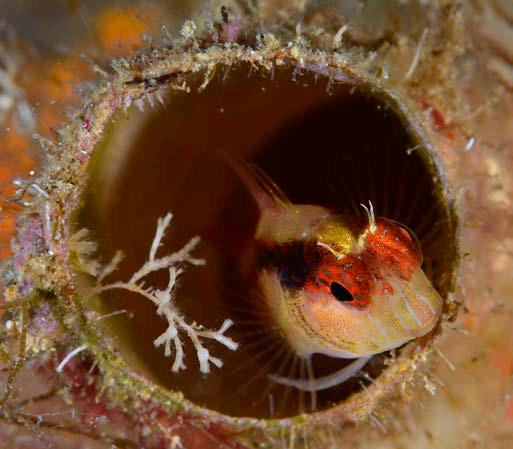
In June, Malta announced the creation of new marine protected areas in the Mediterranean and the expansion of others, bringing the nation’s total protected waters to over 35 percent. The new protections are based on the findings of two Oceana expeditions in 2015 and 2016, where researchers documented the presence of important reef and cave habitats in coastal and deep waters.
In the Mediterranean, conservation efforts like these have particular importance. According to a recent report from the United Nations Food and Agriculture Organization, the Mediterranean is the world’s most overfished sea, with more than 90 percent of fish stocks harvested above the sustainable limit.

WINTER 2018 | Oceana.org7
Underwater passage off Malta
Striped blenny
©Oceana/Carlos Minguell
©Oceana/Carlos Minguell
News + Notes
Opposition to offshore oil swells on the U.S. East and West Coast
On August 8, Thunderbolt, Georgia became the 300th municipality nationwide to formally oppose the expansion of oil drilling off its shores. Opposition has skyrocketed in the wake of President Trump and Interior Secretary Ryan Zinke’s January proposal to expand offshore oil drilling to nearly all U.S. waters.
And it’s not just the East Coast that’s joining Oceana’s campaign against offshore oil. As of early October, 80 West Coast cities and counties had acted to oppose new offshore drilling in the Pacific Ocean. In September, both California Governor Jerry Brown and Delaware Governor John Carney signed legislation that prohibits the building of new infrastructure related to expanded offshore oil drilling.
“California and Delaware’s elected leaders are standing up to President Trump and Secretary Zinke’s radical offshore drilling plan, which threatens to destroy tourism, recreation and fishing businesses that rely on a clean and healthy ocean,” said Diane Hoskins, Oceana’s campaign director. “States and municipalities are unequivocally saying ‘no’ to drilling off their coast, sending a clear message that the Trump administration will not go unchallenged.”
The Quark, a narrow strait between Finland and Sweden, boasts a unique mix of marine, brackish and freshwater habitats. The region’s network of shallow bays supports seals, migrating seabirds and the critically endangered seaspawning grayling, a fish in the salmon family.

In September, Oceana conducted a scientific survey in this UNESCO World Heritage-listed area, building on initial research from 2011 and 2013. The team focused on a combination of areas to highlight the Quark’s importance for aquatic life and to provide data from places where less information is available, such as offshore reefs and banks.
Oceana will use data from this expedition to catalyze the creation of a marine protected area spanning the Sweden-Finland boundary, safeguarding it from habitat degradation, pollution, sand dredging and other threats.
Forty-four percent of almost 400 seafood samples tested from Canadian retailers and restaurants were not what they claimed to be on the menu or label. This alarming statistic was the conclusion of an August Oceana Canada report, the most comprehensive investigation into seafood fraud and mislabeling ever conducted in Canada.
Mislabeling rates were highest in restaurants, where cheap fish such as tilapia or amberjack masqueraded as more expensive species. The majority of samples of “butterfish” and “white tuna” turned out to be escolar, an oily fish that can cause diarrhea, nausea and vomiting.
8
Oceana expedition explores UNESCO heritage site on Sweden-Finland border
Nearly half of seafood samples tested in Canada are mislabeled
European plaice
©Oceana/Carlos Minguell
“Shark lady” Eugenie Clark, who died in 2015 at the age of 92, was a pioneering shark biologist and one of the first women to rise to prominence in the once-male-dominated field of marine biology. So, when Oceana scientist Mariah Pfleger discovered a new species of dogfish shark, she decided to name it after the woman who inspired generations of female scientists.

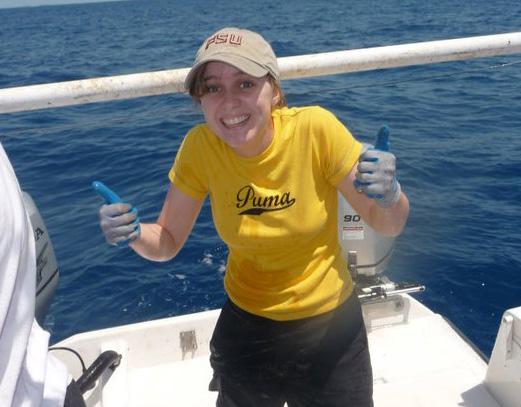
Squalus clarkae, known as Genie’s dogfish, is a small, deep-sea shark that lives in the Gulf of Mexico and Caribbean. Previously, Genie’s dogfish was assumed to be part of a group of species known as shortspine spurdogs. Pfleger and her colleagues at Florida Institute of Technology and Florida State analyzed the shark’s anatomy and DNA, and discovered that it was distinct enough to warrant its own species designation.
Pfleger warns that overfishing and the shark fin trade are driving fishing interests deeper and deeper to meet demand, potentially endangering deep-sea species like Genie’s dogfish.
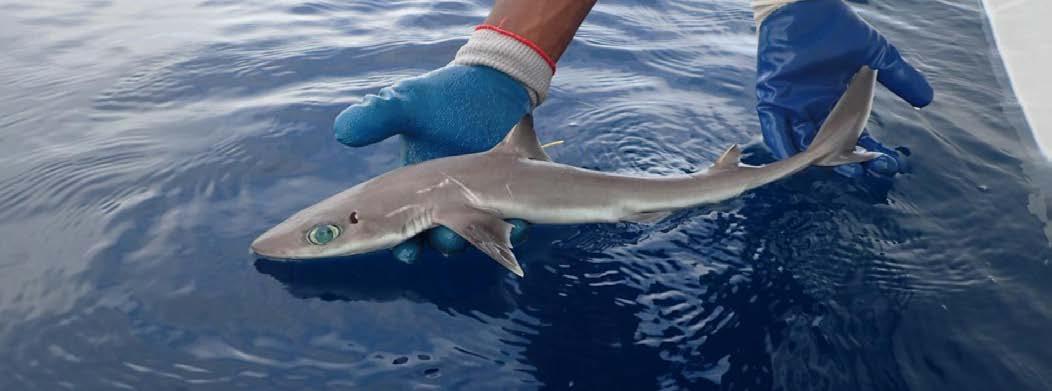
WINTER 2018 | Oceana.org9
Genie’s dogfish lives in the Caribbean Sea and the Gulf of Mexico
Oceana scientist discovers new shark species
Eugenie Clark Mariah Pfleger
Courtesy of Mote Marine Laboratory
©MarAlliance
Marcella Cacci of One Ocean Beauty
One Ocean Beauty, Oceana’s new, exclusive beauty and wellness partner, has a message for you: They care about the sea as much as they care about your skin. Inspired by the health benefits of the sea, their goal was to give back while also using marine-derived ingredients and sustainable production to create products that are scientifically proven to work.
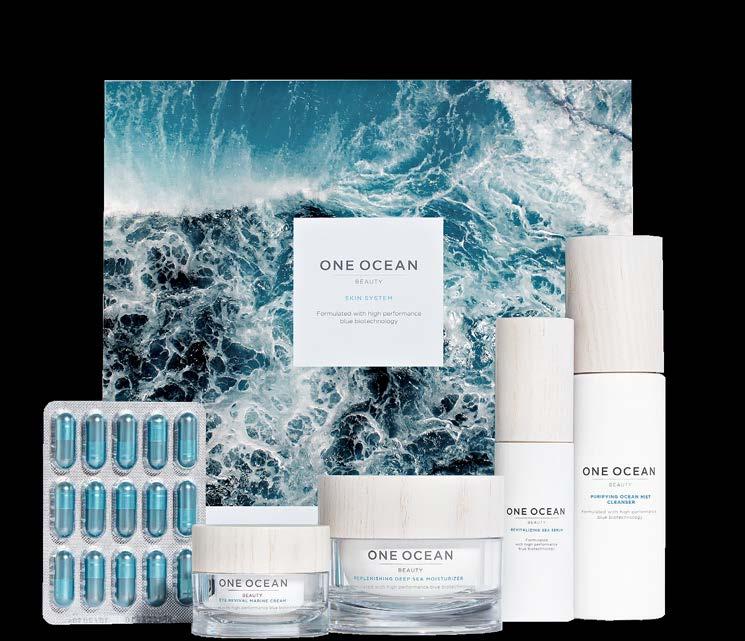
The brand was founded by beauty industry veteran Marcella Cacci. Previously, Cacci was part of the repositioning team that took the British luxury fashion house Burberry public. She was also President of Burberry Beauty, driving retail sales of over $500 million.
Known for her innovative and strategic thinking, Cacci developed One Ocean Beauty as a 360 degree, sociallyaware brand.
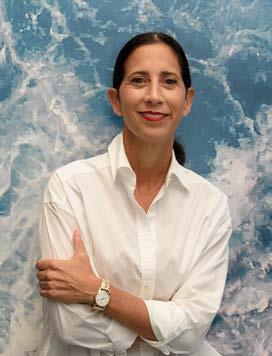
One Ocean Beauty is committed to protecting and restoring the world’s oceans, Cacci explains. The company pledged a substantial donation to Oceana before it even launched, as opposed to tying its contribution to a percentage of sales or profits — as is more customary. As Cacci notes, this is a new and breakthrough model for corporate funding.
Q: Everyone has a personal connection to the sea, be it childhood beach trips or a love of whales. What’s yours?
A: I grew up by the ocean and it has always brought balance and happiness to my life. I always knew that I looked better and felt better at the beach. My happy place is by the ocean, whether it be Mykonos, Montauk or Malibu.
10
©Oceana
Beauty?
A: One of the key reasons was to be able to raise awareness and help protect the oceans. Then, after reading Wallace J. Nichols’ Blue Mind, I fully understood the powerful psychological and physiological effects of the ocean. This led me to create a brand that was fundamentally different from any of the marine-led brands on the market, both in its ingredient story, its production and its commitment to the oceans.
Q: What makes your products special?
A: Our ingredients are sourced from the world’s oceans. Marine microorganisms, seaweed, kelp and algae are serial survivors, developing mechanisms to protect themselves and thrive in extreme environments.
Through Blue Biotechnology, we reproduce these natural, marine actives in the lab and use the survival mechanisms to offer extraordinary beauty and wellness benefits. This means that we do not harvest or harm the biodiversity of the oceans and our production is sustainable. All of the active ingredients in our products are clinically-proven, and we do not test our formulas on animals.
Q: Why did you decide to support Oceana?
A: We chose Oceana because it is the largest ocean conservation organization globally; it is sciencebased and has achieved incredible victories for the oceans.
Q: Beyond your generous support of Oceana, how else does your company help sustain healthy oceans?
A: As a socially aware company, we have been mindful about all of our decision-making, from our sustainable production, to the recyclable packaging and shipping materials. We try to make as little impact on the environment as possible. We are also creating awareness for Oceana and ocean conservation amongst our customers through our website, social media, press articles and events.
Q: What’s next for One Ocean
Beauty?
A: We are in the process of developing new and innovative products using the extraordinary resources the ocean provides. New categories we are currently working on include body care and sun care. On the conservation side, we are expanding our Blue Life blog. This is a platform on our website where we are creating a community, featuring inspiring stories from people and companies whose lives revolve around the oceans and its protection.
Q: What is your vision for the future of the ocean?
A: Our vision for the future would be an ocean that is clean, healthy and vibrant for our generation, and for generations to come.
Q: The ocean faces some daunting problems. What issues worry you the most?
A: Obviously there are many issues regarding the oceans. Probably the two we are most concerned about are plastic pollution and the climate and energy issues, including offshore drilling and seismic blasting.
WINTER 2018 | Oceana.org11
Q: Why did you launch One Ocean
Chaos & Caviar
Winning the fight to bring science to Brazil’s struggling fisheries
At first glance, bottarga looks like a cured, honey-orange sausage. But this pricey Mediterranean delicacy is actually the dried, salted egg pouch of a mullet. Bottarga’s intense, caviar-like flavor has won it plenty of fans, but in the southern Brazilian state of Santa Catarina, its popularity has set off a battle.

There, the demand for bottarga has pitted industrial fishers, who mainly catch mullet for its eggs, against small-scale, local fishers, who have traditionally relied on mullet for food and income. In recent years, mullet have struggled under this one-two fishing punch, leading scientists to worry the population could crash.
It was clear that these important fish needed responsible fishing rules to survive. Brazil, however, is crippled by government corruption and scandals. It’s a harsh environment for science and the rule of law.
Despite this, in 2016, Oceana made a bet that it could draw up science-based mullet regulations — and get fishers and the government to agree to them. The bet is part of a broader Oceana strategy to restore key Brazilian fisheries and protect embattled ocean habitats. And as recent victories show, positive change is possible, even in the midst of chaos.
12
Mullet meters
In Brazil, fishing is a big deal. The country is home to nearly 900,000 full-time fishers, and a further 3.5 million directly or indirectly involved in the seafood industry.
But government oversight of fish and fishers is in disarray. It’s been a full decade since the government collected any national-scale fisheries data. The law to combat overfishing is just one sentence long. And the fisheries department has been knocked from ministry to ministry in recent years: first the Ministry of Fisheries in 2009, then the Ministry of Agriculture and Poultry in 2015, then the Ministry of Industry and Commerce in 2016, and finally buried under the office of the president in 2017 as a Special Secretary of Fisheries and Aquaculture.
These moves have robbed fisheries officials of their legislative clout. Ugo Vercillo, Director of the Department for Species Conservation and Management at the Ministry of the Environment, described Brazil’s fisheries challenges in poetic terms: “It’s like playing with a toy made of sand.”
In Santa Catarina, the epicenter of Brazil’s mullet fishery, economic changes compounded the already considerable political problems facing fisheries officials. Industrial fishers began targeting mullet, locally known as tainha, sometime in the early 2000s, said Henrique Anatole, the head of the sustainable fisheries unit at the Ministry of the Environment. Artisanal and industrial fishers clashed as the years wore on, each side blaming the other for tainha’s slipping numbers.
Santa Catarina officials unsuccessfully tried to mitigate the conflict, Atatole said. Some local prosecutors even argued that the industrial fishery should be shut down entirely, a move that accomplished little more than further angering the industrial fleet.
Oceana waded into this tense situation in 2016, certain that science could help untangle the Gordian knot that politics had tied. But first, the team needed to demonstrate that fishery management basics like data collection were even possible in Santa Catarina, and that they were workable using simple, inexpensive tools, explained oceanographer
Ademilson Zamboni, the head of Oceana in Brazil.
The team carried out two scientific assessments of the mullet stock, and in 2017 successfully persuaded small and large-scale fishing associations to voluntarily collect catch data. Oceana designed an online portal called the Tainhometer, or Mullet Meter, to allow fishermen to report in real-time the weight and timing of their catch, as well as the location and gear used.
These efforts paid off. Santa Catarina fisheries officials used the Tainhometer’s data to set mullet quotas for the 2018 fishing season — the first-ever data-driven catch limits for this fishery.
“I think it was a great success,” said fisheries official Anatole. He praised the system of rules, noting that they enabled a quick end to the industrial season, after the fleet maxed out its quota in just 11 days. In early September, the Quota Monitoring Committee, a government group based in Brazil’s capital, reported that the quota system had, for the most part, staved off overfishing for the year.
Over the last two decades, overfishing has pummeled Brazil's mullet populations.
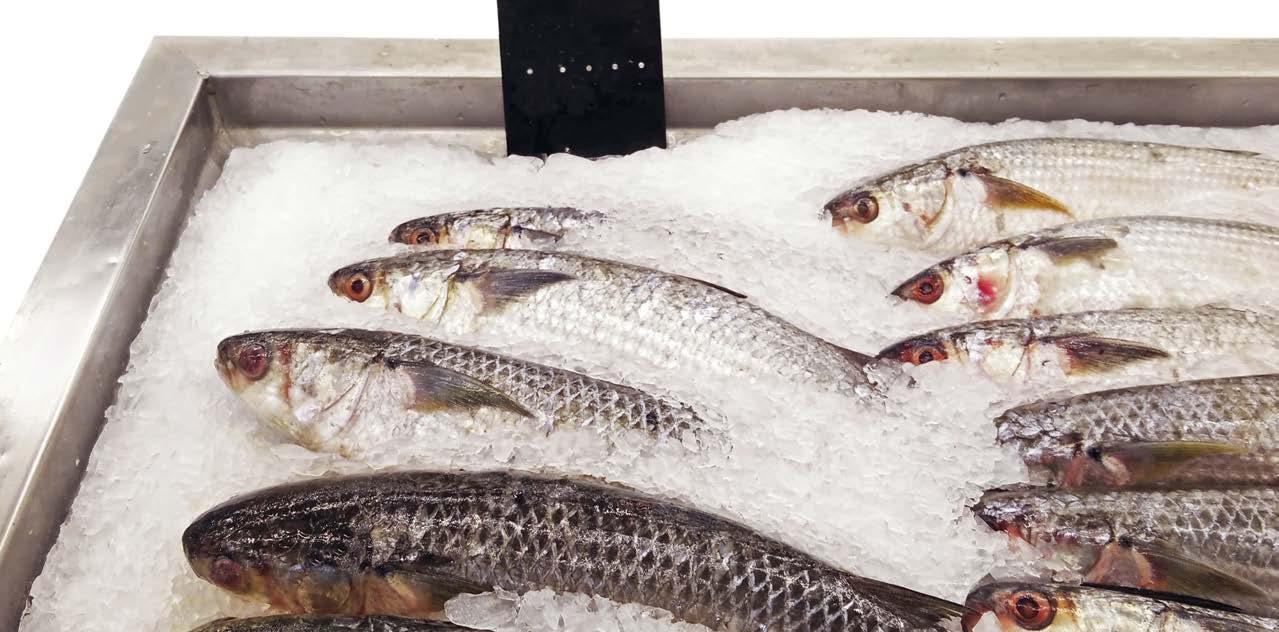
Chaos & Caviar 13 WINTER 2018 | Oceana.org
©Shutterstock/Cherdchai Chaivimol
Seeing red
In Brazil, it’s not just mullet that’s in trouble — far from it. According to some estimates, 80 percent of fish stocks are fully exploited or overexploited, meaning only 20 percent can withstand any extra fishing pressure. “Right now,” said Anatole, “our fisheries are in very bad shape.”
Dozens of marine fish and shellfish are on the “red list” of nationally threatened plants and animals. Several of these are significant seafood species, including the blue land crab, which is important to fishing communities, and the endangered dusky grouper. In 2016, Oceana successfully campaigned to reinstate the red list, after industrial fishing interests lobbied a judge to throw it out.
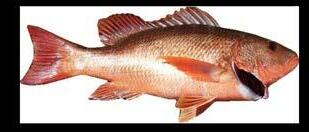



Until recently, however, the laws protecting these threatened fish and crustaceans had no teeth, Zamboni said. The government merely forbade the fishing of red list species — a decree that, unsurprisingly, most fishers ignored. Data indicated that some of these animals had even declined further since the red list was reinstated.
So this year, Oceana and the Ministry of the Environment got together to draft data-driven recovery plans for six red list species, a first for Brazil. The plans include rules such as minimum size, closed seasons and habitat protections — rules designed to reduce fishing pressure, while still allowing fishers to earn income.
“We moved from the side of the problem to the side of the solution,” Zamboni said. Vercillo agreed, saying that efforts like these have brought government scientists and the fishing sector closer together than ever before, even “in the middle of chaos.”
Red List
On the side of science
Sometimes, circumstances do call for flat-out bans. That was the case in Rio Grande do Sul, the southernmost state in Brazil. Once home to the most productive fishing grounds in the country, more than 90 percent of the state’s fishing businesses have shut down in the last 30 years.
A major culprit has been unregulated, out-of-state bottom trawlers, which catch fish by dragging heavy nets along the seafloor. Trawl nets indiscriminately scoop up juvenile fish and non-target animals, and also rip up sponges, corals and other organisms that build rich habitat. Zamboni estimates that 70 percent of bottom trawl catch in Brazil is thrown out.
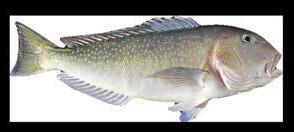
For years, local fishers had watched crews from other states shunt fish, and money, away from Rio Grande do Sul. So in 2017, artisanal and commercial fishing representatives approached Oceana to support their calls for a ban on bottom trawling. Oceana agreed, and organized a parliamentary coalition in favor of the ban. At the same time, press coverage, fishermen protests and a WhatsApp messaging campaign fostered widespread support to end bottom trawling.
Finally, in September, the state parliament unanimously passed the ban law, which Oceana had drafted. The new law covers a band between the coast and 22 kilometers, protecting an area of 13,000 square kilometers.
For fisheries advocates, the law was a welcome surprise. “It was against all predictions,” Zamboni said. “Nobody believed it was possible to pass this act in an election year.”
These wins aside, fisheries advocates are under no illusion that change is easy in Brazil, at least right now. But Oceana and its allies in the government have a not-so-secret weapon. “People can disagree with you,” Zamboni said, “but if you have the science, they will respect you.”
14
Chaos & Caviar
Southern red snapper
Snowy grouper
Gillbacker sea catfish
Tilefish
Dusky grouper
©TrevorMeyer
©KevinBryant ©FernandoMistroriogo de Almeida
©Oceana/CarlosSuárez
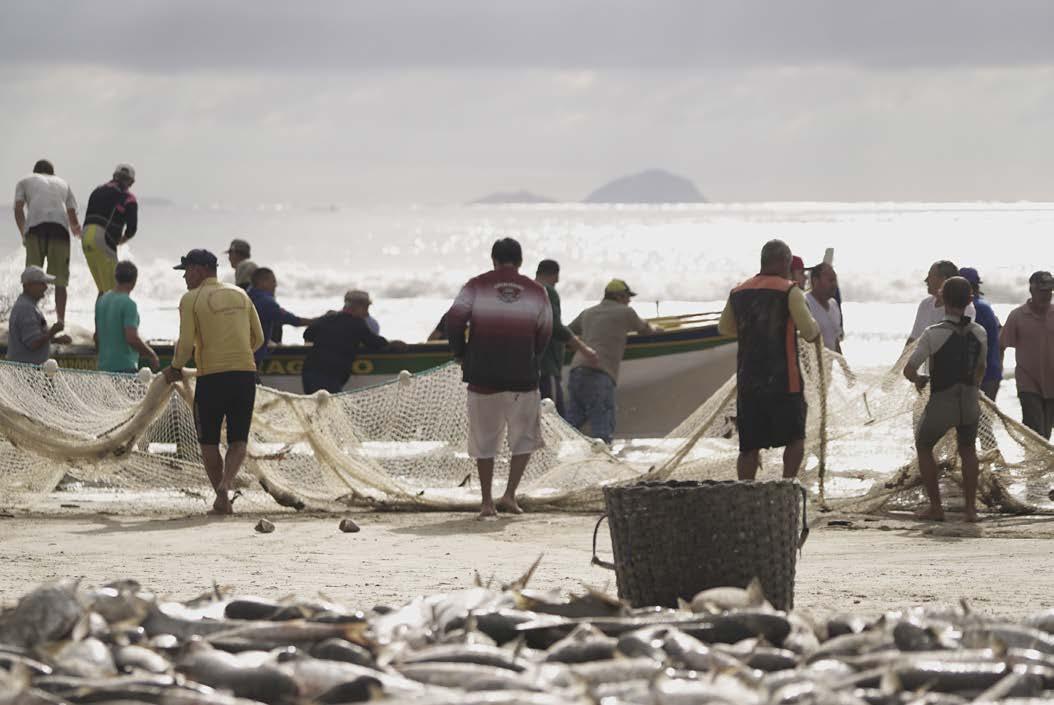
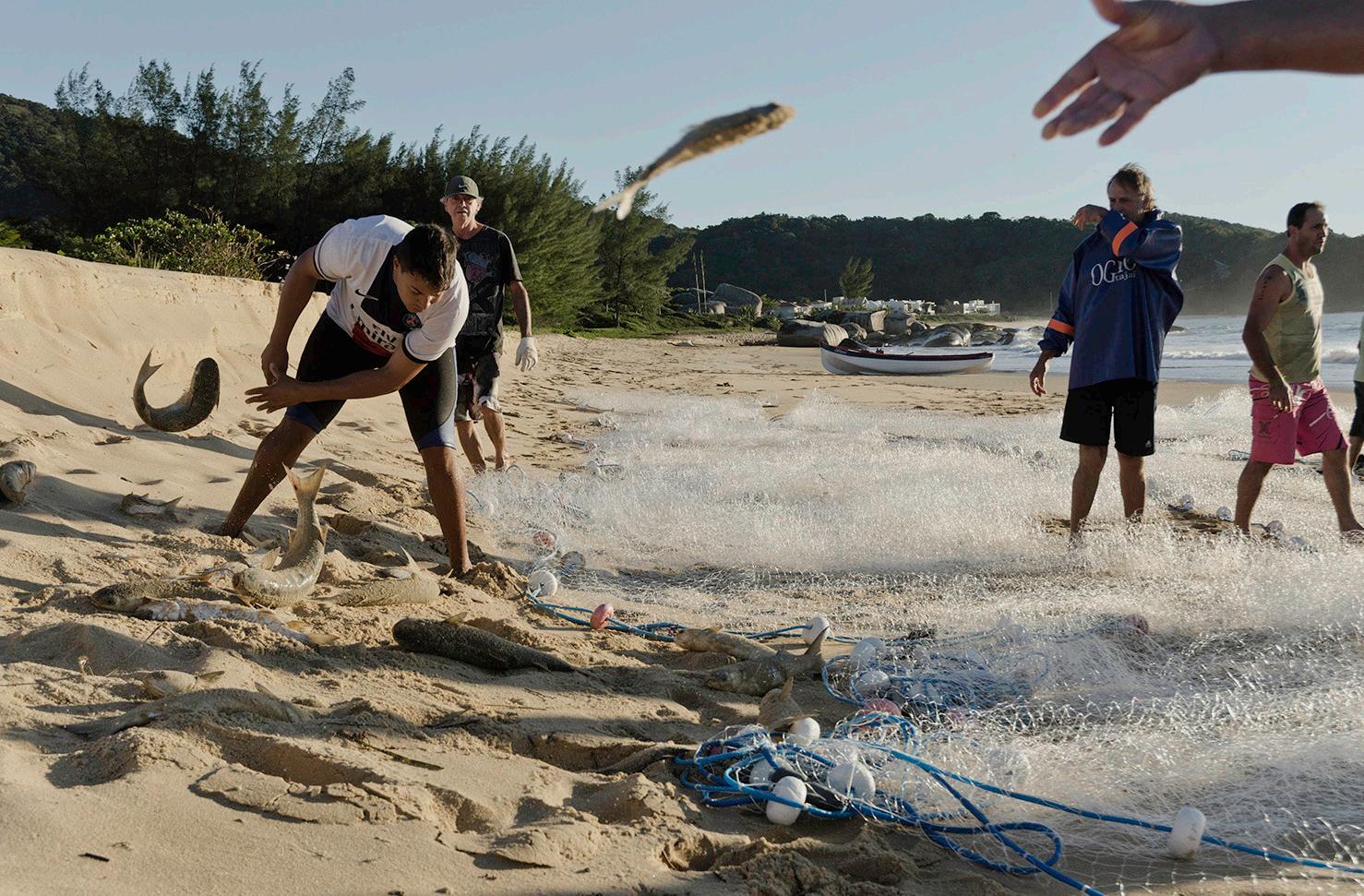
WINTER 2018 | Oceana.org15 Chaos & Caviar
In Santa Catarina, artisanal fishermen, pictured below, catch mullet when the fish migrate close to shore, in contrast to industrial fishers who target the fish during their offshore migration.
A government report found that the 2018 mullet quotas were largely effective at preventing unsustainable catch levels.
©Oceana/LeonardoMartins
©Oceana/MatiasQuintenos
Eyes on the Deep
An Oceana Canada expedition shows why Canada’s underwater mountains deserve protection
Off the coast of British Columbia, a family of giants rise from the lightless depths. One of these is home to SGaan Kinghlas, or “supernatural being looking outwards” in the Haida language.
In July, during a 16-day scientific expedition, humans were able to observe SGaan Kinghlas’s abode in extraordinary detail.
SGaan Kinghlas-Bowie is a seamount — an underwater mountain that doesn’t break the surface — and it’s part of a group of dozens off Canada’s Pacific coast. Most of these mountains lie well beyond the reach of scuba divers, so researchers aboard the Ocean Exploration Trust’s research vessel E/V Nautilus used remotely operated underwater vehicles, or ROVs, to chart these unexplored habitats in hundreds to thousands of meters of water.
The robots filmed dense thickets of coral, vividly colored rockfish and ancient lava flows carpeted in sea stars. “What we discovered was phenomenal,” said Robert Rangeley, Oceana Canada’s director of science. “It was nothing short of awe-inspiring and exceeded everyone’s expectations, including the seamount experts we had on board.”

16
Researchers pilot a remotely operated vehicle to explore the anemone-dotted slopes of an underwater mountain.

17 WINTER 2018 | Oceana.org
©Fisheries and Oceans Canada
“We saw animals in ways we didn’t think they existed,” said Cherisse Du Preez, a marine biologist at Fisheries and Oceans Canada and one of expedition’s lead scientists. On the SGaan Kinghlas-Bowie seamount, for example, the team recorded a forest of corals whose size and density defied expectations. “We got out there, we turned on the cameras,” Du Preez said, “and suddenly we’re seeing things that we didn’t know were possible.”
The expedition, a partnership between Oceana Canada, Fisheries and Oceans Canada, the Haida Nation and Ocean Networks Canada, surveyed six new seamounts and likely discovered new species among the 150 specimens collected. Viewers from over 120 countries watched the expedition’s livestream, calling and writing in with questions — and sometimes even helping the scientists, as when online viewers correctly identified a long-finned dragonfish.
Interest in seamounts is growing, and so are the threats facing them. Around the world, these habitats are endangered by destructive fishing, pollution, climate change and the future risk of deep-sea mining.
Seamounts just outside of Canada’s national waters have been fished for decades, Du Preez said, sometimes using bottom trawls, a type of heavy fishing gear that scrapes along the seafloor, devastating slowgrowing coral and sponges. “I’ve been diving on one of those seamounts,” Du Preez said. “It looks like it was trawled yesterday. It hasn’t recovered.”
Once destroyed, seamount habitats can take hundreds or thousands of years to recover. “It makes no sense, no sense at all,” Rangeley said, “to do any kind of bottom destructive activity in these areas.”
SGaan Kinghlas-Bowie is more fortunate than seamounts outside of Canadian waters — it’s been safeguarded as a marine protected area since 2008, and is currently cooperatively managed by the Haida Nation and Fisheries and Oceans Canada. In January 2018 the Haida Nation and Fisheries and Oceans Canada closed the area to bottom-contact fishing as a precautionary measure to protect sensitive seafloor habitats.
To the south of SGaan Kinghlas, a zone containing dozens of seamounts is under temporary protection from activities that could harm their seafloor habitats, until permanent safeguards can be established. This zone, combined with SGaan Kinghlas-Bowie, will eventually protect nearly 90 percent of all known seamounts in Canada. Oceana’s expedition work had added further scientific evidence about the importance of these underwater mountains and has garnered public support for the proposed protections.
When glass sponges die, their silica skeletons stick around. The next generation of sponges grows on top of the skeletons, a process that eventually creates vast glass-sponge reefs.

Eyes on the Deep 18
©OET WHOI MISO Northeast Pacific Seamount Expedition
The animal specimens gathered on the expedition likely include species new to science.
Although sea urchins look wildly different from softbodied sea cucumbers, they’re actually each other’s closest living relatives.
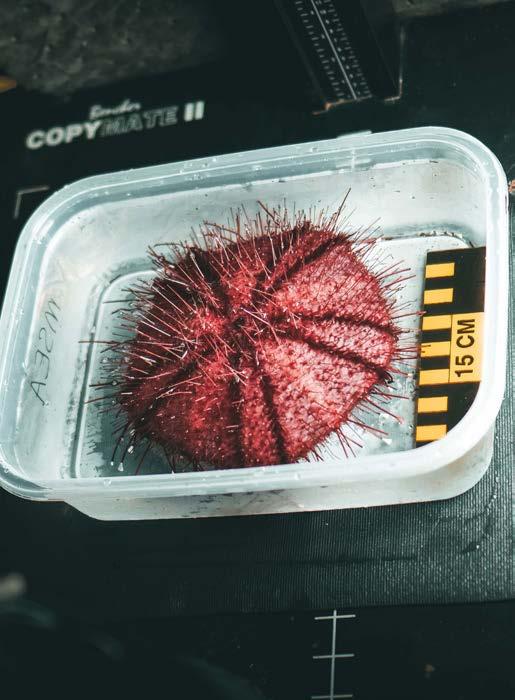
Gathering specimens is key to understanding deep-sea ecosystems.
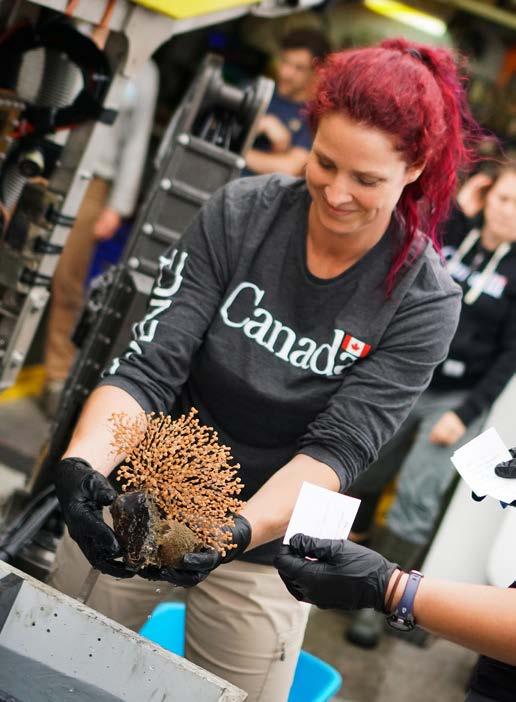
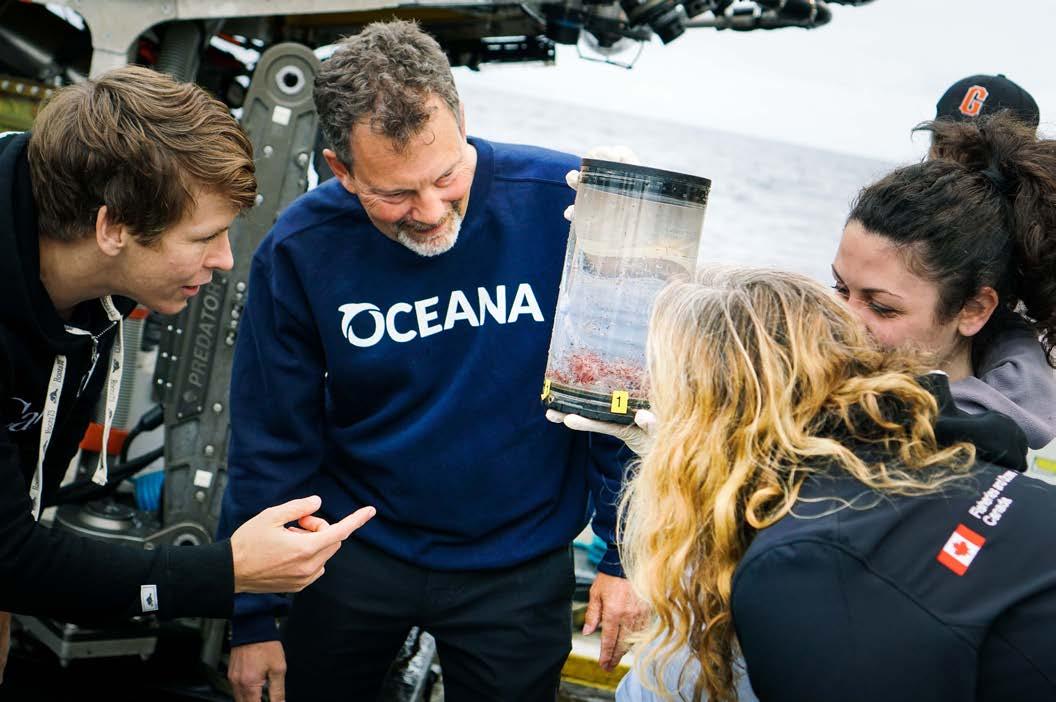
WINTER 2018 | Oceana.org19 Eyes on the Deep
©Fisheries and Oceans Canada
©Fisheries and Oceans Canada
©Fisheries and Oceans Canada
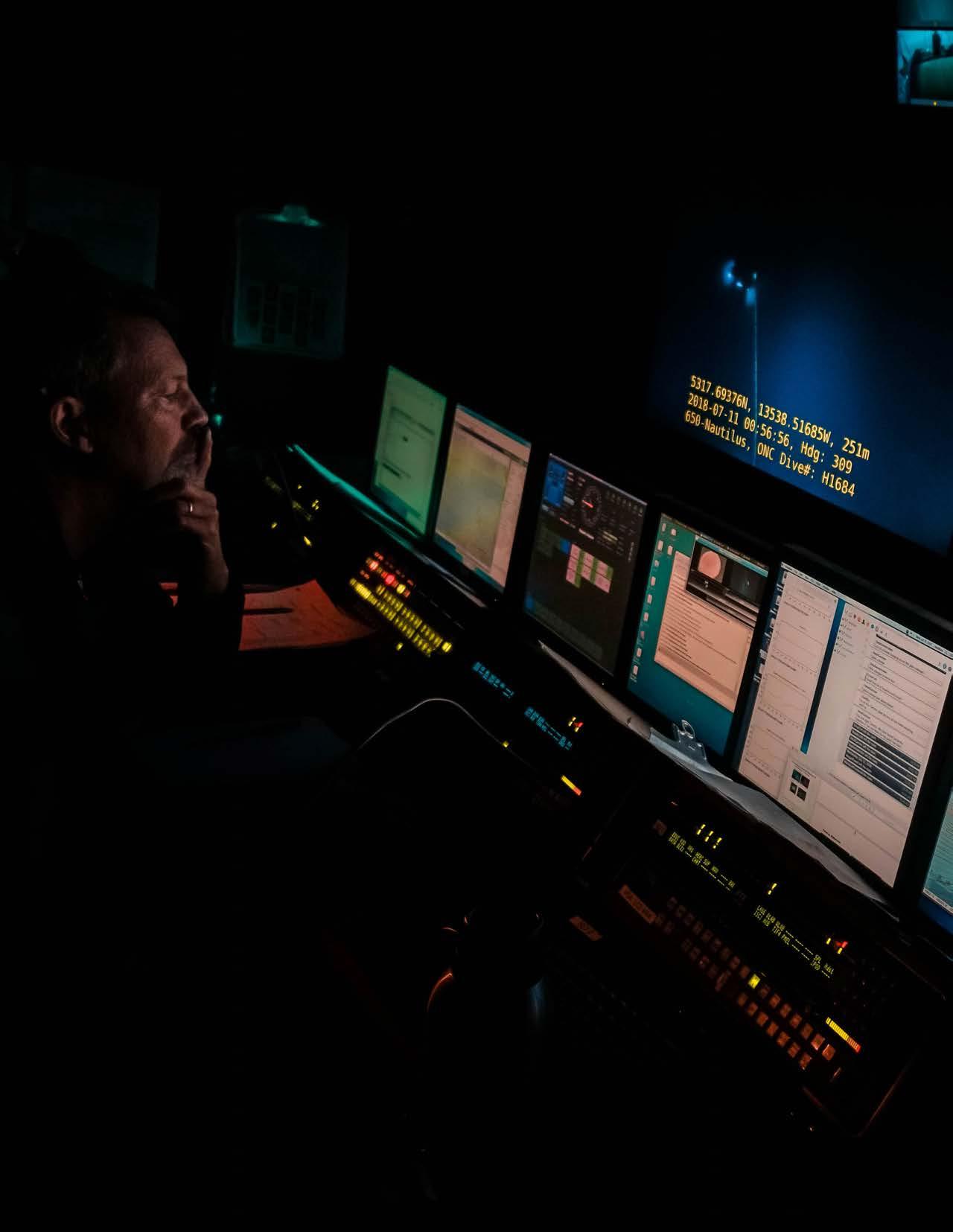
Eyes on the Deep 20 ©Fisheries and Oceans Canada
The E/V Nautilus, owned by the Ocean Exploration Trust, has two remotely operated vehicles — Argus and Hercules — and multibeam sonar tools, which map the shape and depth of the seafloor below.
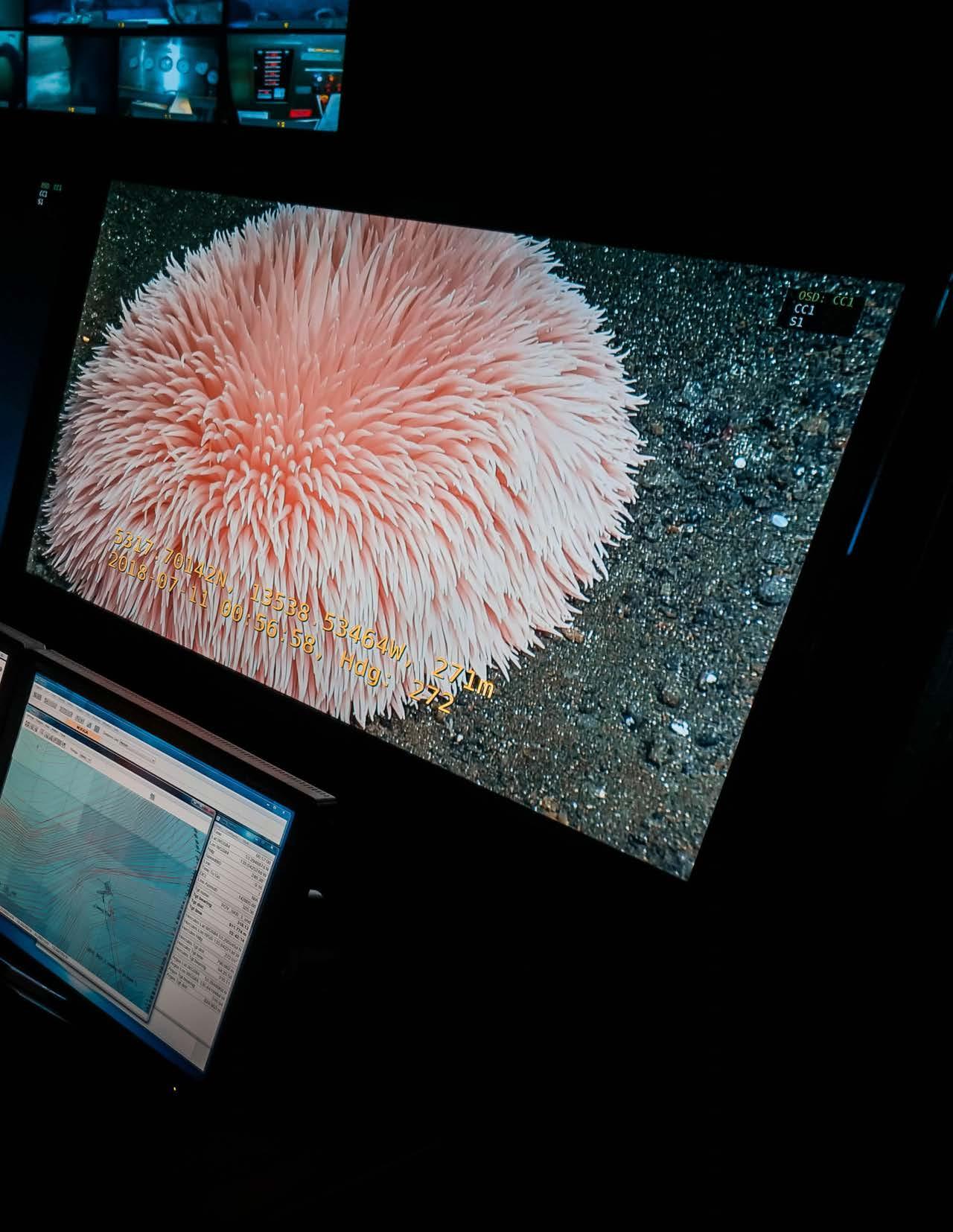
Eyes on the Deep
21 WINTER 2018 | Oceana.org
Blackspotted rockfish are one of around 30 species of rockfish that live along the seafloor off Canada’s Pacific coast. Rockfish can be extraordinarily long-lived, with some thought to live for over 200 years. Certain species, like the bocaccio or Pacific ocean perch, sustain valuable fisheries.
These Dr. Suess-esque structures are glass sponges, which build their ghostly white skeletons out of silica. These animals — yes, they’re in the animal kingdom — provide important habitat for fish, shrimp and other creatures. Glass sponges are slow-growing and incredibly long-lived: one specimen was found to be 11,000 years old.
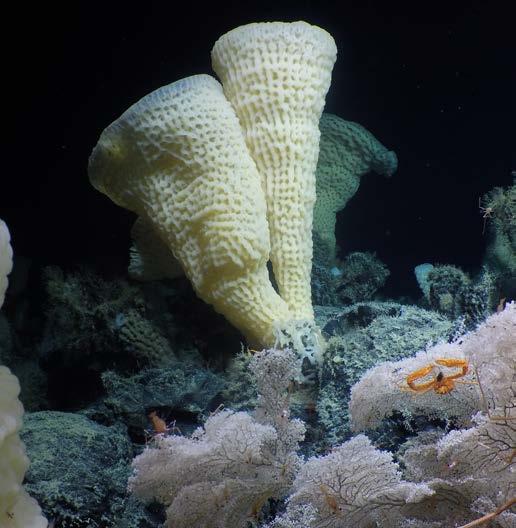
A snow crab crosses a sea of brittle stars. The mounded rocks beneath the animals are pillow lava, a structure characteristic of volcanoes that have erupted underwater.

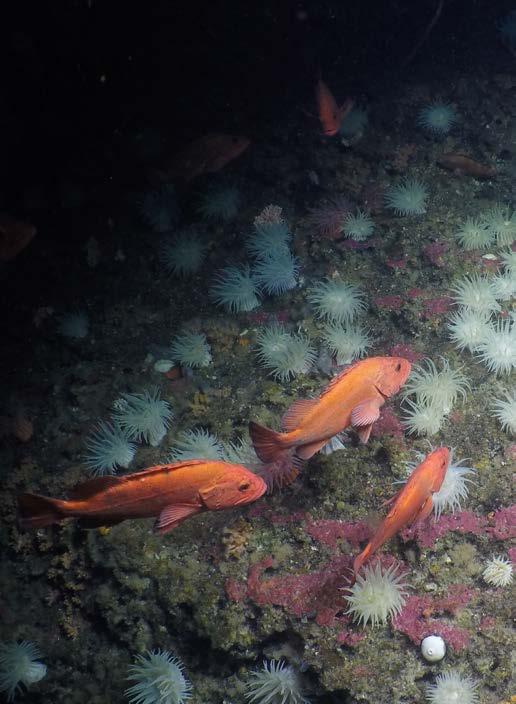
Cool, nutrient-rich currents running up the flanks of seamounts support corals, sponges and plankton, feeding deep-sea fish, which in turn feed open-ocean fish, whales and seabirds. Not surprisingly, seamounts often support thriving fisheries.
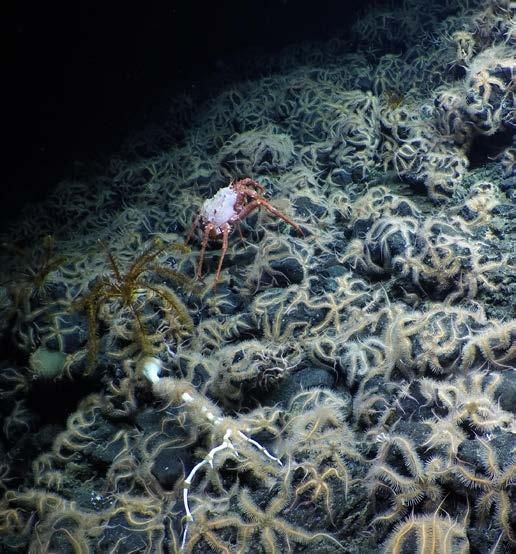
22 Eyes on the Deep
©OET WHOI MISO Northeast Pacific Seamount Expedition
©OET WHOI MISO Northeast Pacific Seamount Expedition
©OET WHOI MISO Northeast Pacific Seamount Expedition
©OET WHOI MISO Northeast Pacific Seamount Expedition
Deep-sea sea cucumbers, like this one, use their hydraulic legs to sieve decomposing plants, animals and other organic matter from seafloor muck.

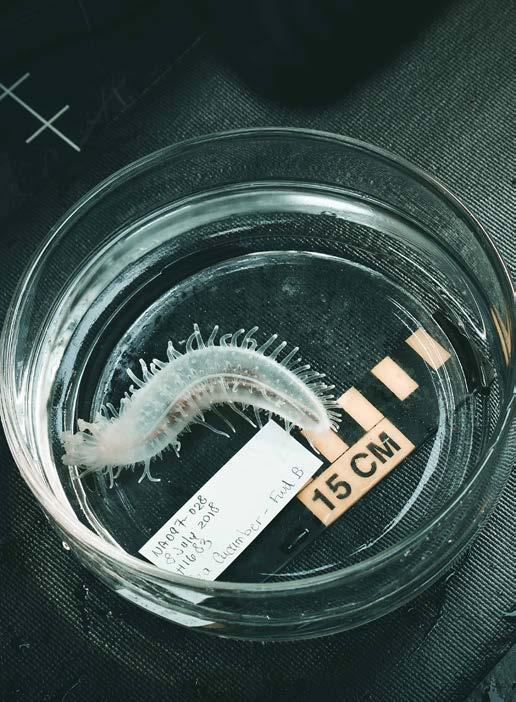
The abundance of these seamounts often attracts hungry whales like this humpback, spotted near Explorer Seamount in July. Canada’s humpbacks have staged a remarkable recovery after the 1982 moratorium on commercial whaling. Once on the cusp of extinction, there are now 3,000 to 5,000 humpback whales in British Columbia alone, according to the Department of Fisheries and Oceans.
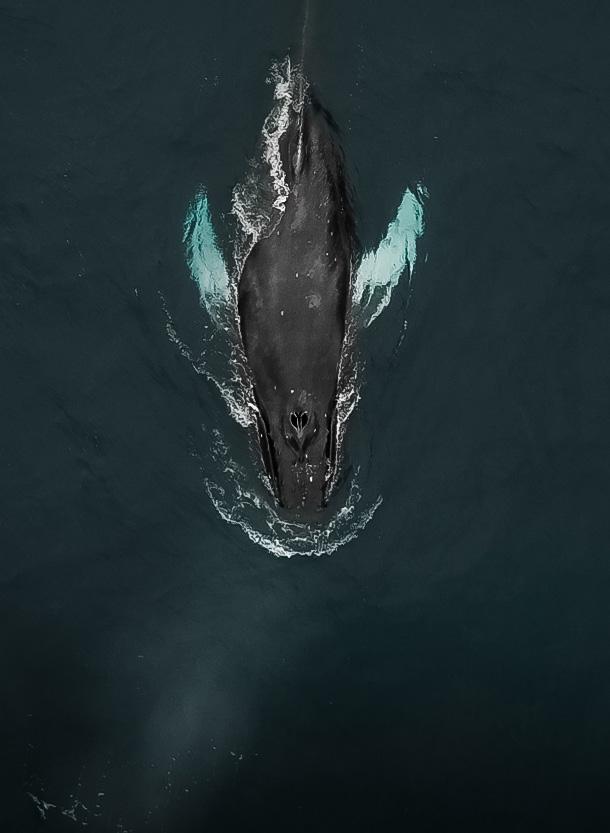
WINTER 2018 | Oceana.org23 Eyes on the Deep
Researchers and crew wave from the deck of the E/V Nautilus.
©Fisheries and Oceans Canada
©Fisheries and Oceans Canada
©Fisheries and Oceans Canada
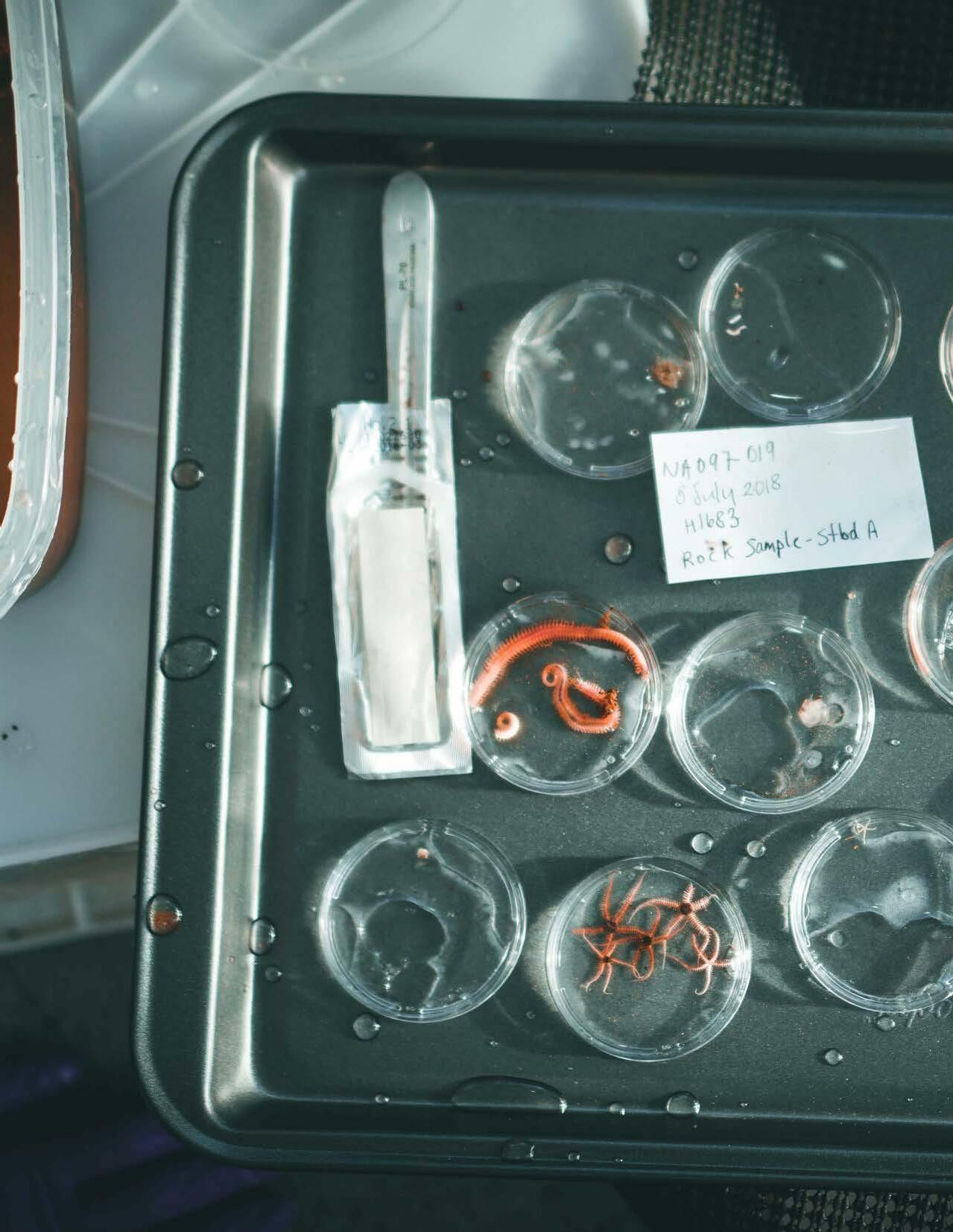
Eyes on the Deep 24 ©Fisheries and Oceans Canada
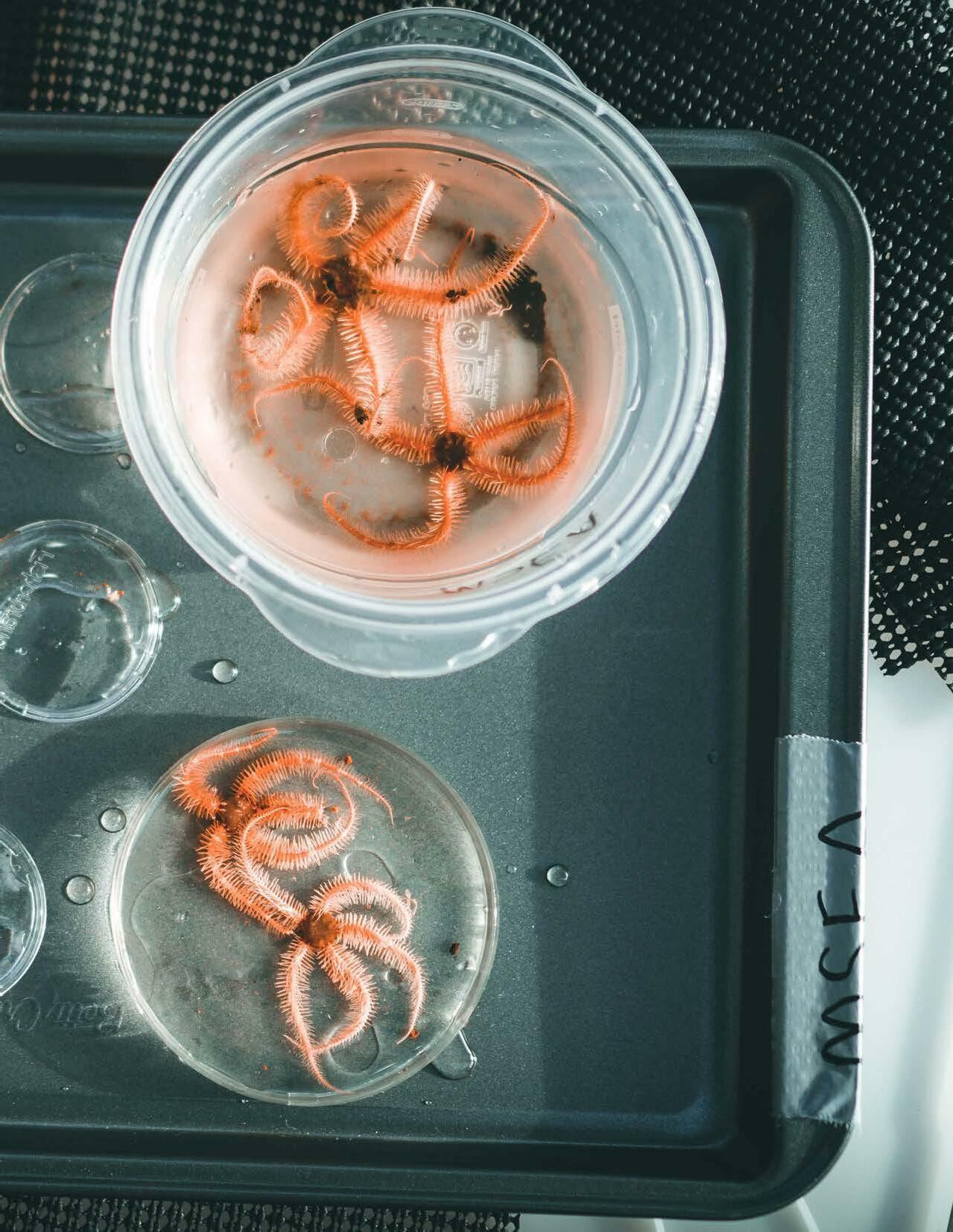
WINTER 2018 | Oceana.org25
These deep-sea brittle stars are among the 150 specimens collected during the expedition, a partnership between Oceana Canada, Fisheries and Oceans Canada, the Haida Nation and Ocean Networks Canada.
2017 - 2018 Victories
2018 | September
• California phases out destructive swordfish drift gillnet fishing, protecting marine mammals, turtles and sharks from bycatch
• Brazil bans destructive bottom trawling in waters of Rio Grande do Sul
June
• Malta expands habitat protections in the Mediterranean May
• Brazil introduces first-ever management rules for tainha, begins science-based management of fisheries
• Philippines creates Philippine Rise protected area to safeguard unique habitat, corals and more April
• More than 140,000 square miles of fragile seafloor habitats protected from destructive bottom trawling off U.S. Pacific coast
February
• Chile announces protected area in Tortel to preserve pristine habitat
• Chile protects Juan Fernández Islands and wildlife found nowhere else on Earth January
• Belize bans offshore oil drilling, protecting the largest barrier reef in the Americas
2017 | December
• Canada acts to make the status of fisheries more transparent to its citizens
• Chile protects ocean habitat and wildlife, bans bottom trawling in 98 percent of its seas
• 21 countries and the European Union protect endangered cold-water corals throughout the Mediterranean
November
• The Philippines appoints a special prosecutor to prosecute illegal commercial fishing in one of the country’s largest marine protected areas
September
• European Parliament acts to end overfishing in the North Sea
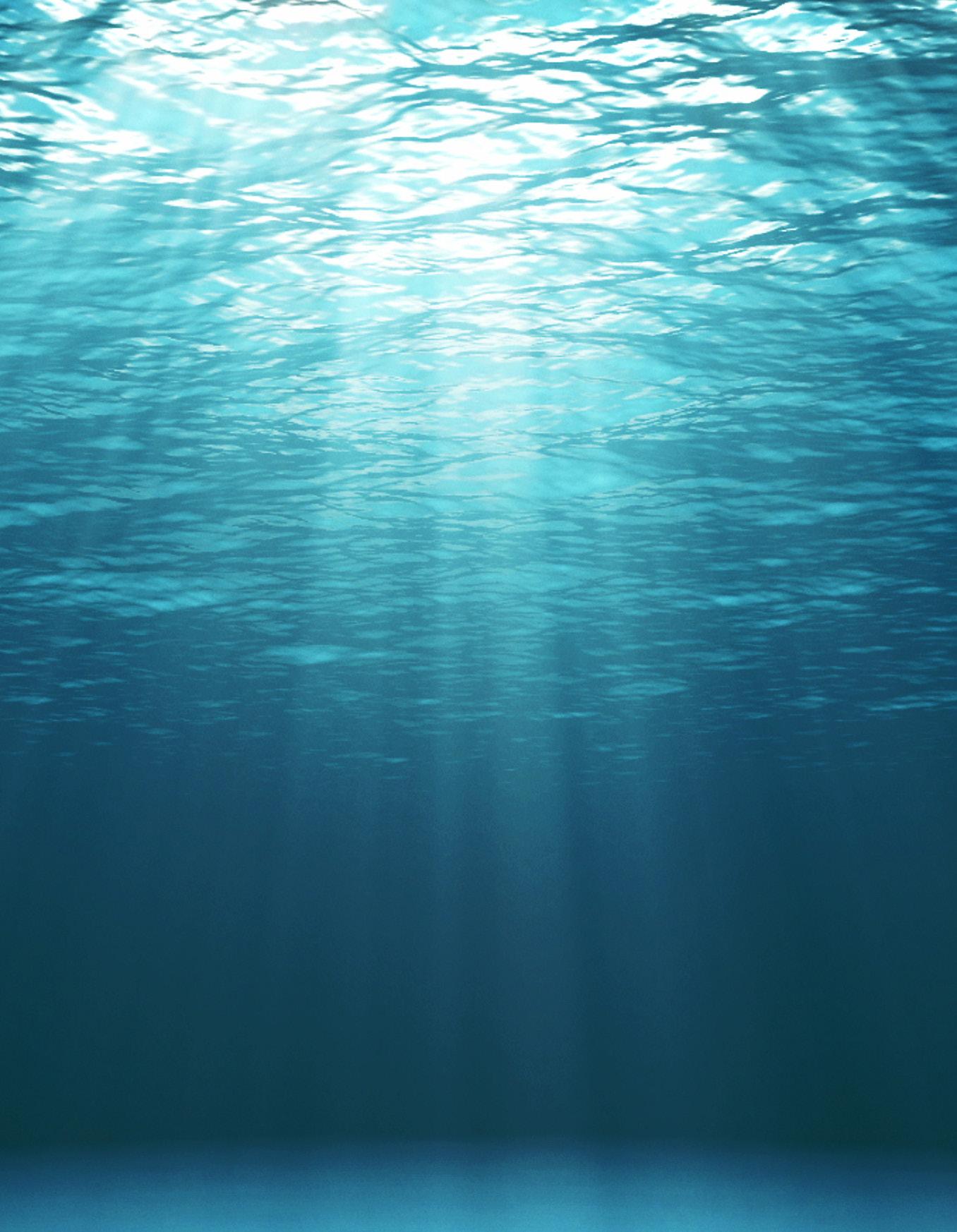
• Peru agrees to publish vessel tracking data through Global Fishing Watch to help fight illegal fishing August
• Chile rejects major industrial port mining project that threatened penguins, whales and fragile habitat
• U.S. court upholds rule requiring traceability for at-risk seafood imports
July
• Chilean Supreme Court forces salmon farming industry to disclose antibiotic use June
• Legal reform makes EU’s external fishing fleet more transparent, accountable and sustainable April
• U.S. takes action to protect West Coast sardines from overfishing for third consecutive year
• California moves to protect hundreds of forage fish species in state waters March
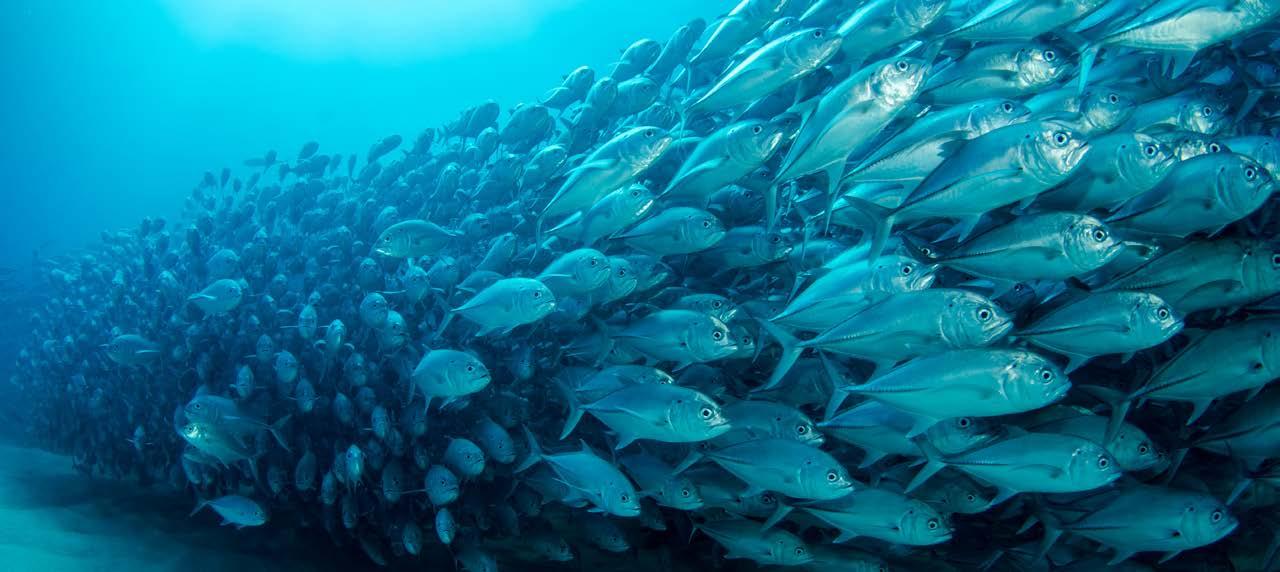
• New pact commits nations to rebuilding a healthy Mediterranean Sea February
• Philippines’ protected area management body adopts vessel monitoring requirement in the Tañon Strait to combat illegal fishing
January
• President Obama protects fish, whales and more from dangerous seismic airgun blasting in the U.S. Atlantic Ocean
26 ©Shutterstock/ LeonardoGonzalez
Supporter Spotlight
Gavin Bladen and Burgess Yachts sail to protect the seas
For Gavin Bladen, navigating to the world’s most beautiful beaches and dive sites is all in a day’s work. He’s the captain of the luxury charter catamaran Hemisphere, and since her launch he’s visited 55 countries and circumnavigated the globe.
Bladen isn’t just an expert captain — he’s an advocate for the oceans, too. Each summer, thanks to the owner’s generosity, Hemisphere’s central charter agent, Burgess Yachts, auctions a week aboard the catamaran at Oceana’s SeaChange Summer Party in Laguna Beach, California. Over the last seven years, the Hemisphere auction has raised over $1 million for Oceana.
For Bladen, captaining Hemisphere is the culmination of a lifelong love of the sea. “From a very young age, I’ve always been drawn to the water,” he said — one of his earliest memories is learning how to swim. As a young man, Bladen learned how to dive while backpacking in Australia in 1992, and later convinced the captain of a liveaboard dive boat to let him work as a deckhand. After stints on charter boats in Australia and the Caribbean, he returned to his native United Kingdom and obtained his first captain’s license.
Hemisphere
Burgess Yachts was founded in 1975 by Nigel Burgess, a renowned sailor and explorer. The company was founded on a love of yachting, the ocean and ocean life, explained Lace Alexander, Burgess’ West Coast Business Development Executive.
This love of the living ocean informs Burgess’ relationship with Oceana. “We are a very proud supporter of Oceana and all its incredible conservation efforts,” Alexander said.
Burgess has been increasingly emphasizing ocean-friendly sailing and cruising education within the yachting community. The company advises yachters to avoid cruising in ecologically sensitive areas, and helps them learn how to cut down on fuel emissions and single-use plastics while on board. Burgess staff also participates in ocean clean-up days and other environmentally focused initiatives — all part of a company-wide emphasis on marine conservation.
In 2004, Hemisphere’s to-be owner and Bladen set about designing Hemisphere by hiring VPLP naval architects. Seven years later, the vessel launched from Pendennis Shipyard in the U.K. At 145 feet long, Hemisphere is the world’s largest privately owned sailing catamaran. The vessel, which can accommodate up to 12 guests, was specifically designed to charter in the tropics. Hemisphere holds a particular appeal for scuba enthusiasts, as it is a recognized PADI training facility.

The dive facilities came in handy for the winners of this year’s SeaChange auction, which took Hemisphere through the Society and Tuamotu Islands in French Polynesia, home to some of the most biodiverse coral reefs on earth. Past years’ winners have sailed through French Polynesia, the Caribbean, the British Virgin Islands and New Zealand.
The auction winners, or the “Oceana family,” as Bladen calls them, have enjoyed diving with tiger sharks in Tahiti and snorkeling with a humpback whale calf and its mother off the Tuamotus.
Along with these thrilling encounters, Bladen has also witnessed overfishing, marine pollution and coral bleaching. But he knows that conservation can make a difference. “While we will never be able to return everything back to how it was, some areas that have received help have become great success stories,” he said. “Everyone can make a difference. It’s not too late.”
WINTER 2018 | Oceana.org27
is the world's largest luxury sailing catamaran.
Dr. Pauly Why we need a global ban on the shark fin trade
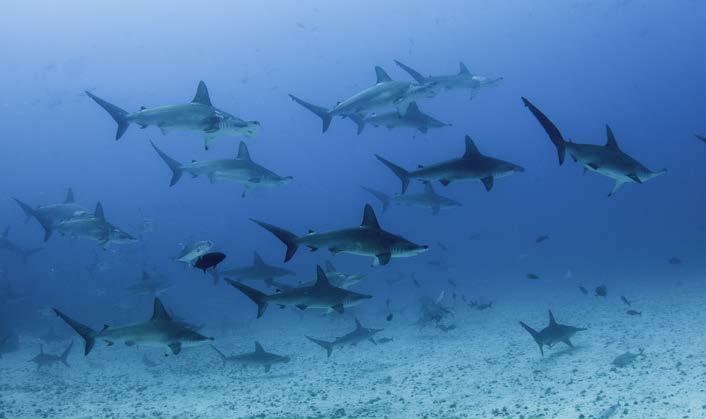
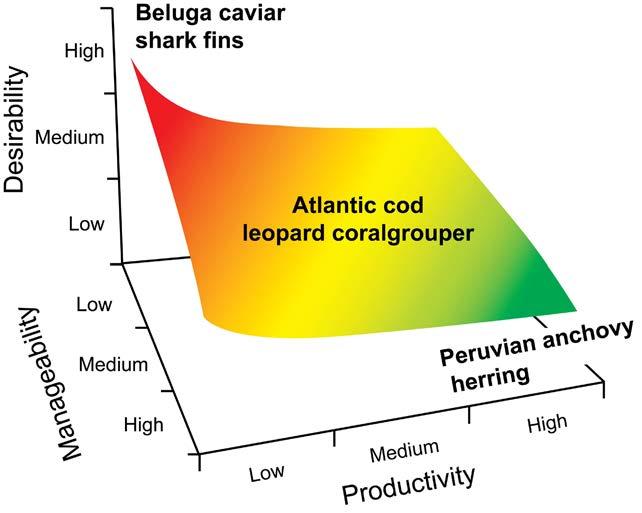
Shark finning should not be a contentious issue, but it is. Thus, as with all such issues, it is best to define the problem at hand. Contrary to bony fish such as herrings or perches, sharks have a rigid dorsal fin on their back, paired pectoral and pelvic fins that correspond to our arms and legs, and a tail, or caudal fin. Jointly, these fins make up about 5 percent of their live weighti .
The rigidity of shark fins is provided by a bit of cartilage which, when dried, processed and cooked, turns into a chewy, noodle-like substance. Shark fins are the key ingredient in shark fin soup, a sought-after delicacy in Asian countries. Because the fin itself has no taste, the soup’s flavor is supplied by chicken broth.
Shark fin soup was a rare dish in ancient times, as sharks are difficult to catch with traditional fishing methods. Thus, it was reserved for the nobility in coastal towns of China.
As the industrialization of fisheries made sharks easier to catch, shark fin soup became more affordable, but kept its standing as a prestigious dish, and spread into the interior of China and throughout the Chinese diaspora.
28
Beluga sturgeon and sharks are desirable, hard to manage and don’t reproduce often. Herring and Peruvian anchovy are productive and manageable, but aren’t particularly desirable.
©Shutterstock/ wildestanimal
This then generated a nearinsatiable demand for shark fins, with the number of sharks finned estimated to range between 50 and 100 million per year. This always involves their death, as fins do not grow back — as many consumers conveniently believe.
At first, this demand was met by shark bycatch in tuna and shrimp fisheries. Now, dedicated shark fin fisheries have developed, for example in the Pacific, where dolphins and sea lions are caught to then serve as bait for sharks.
Dried shark fins are extremely valuable. About half of the shark fins traded in the world go through Hong Kong for local consumption or re-export to mainland Chinaii
Sharks, in the meantime, are suffering on an individual scale, as their fins are often sliced off when they are still alive, leaving them to suffer a painful death once they are dumped overboard. Sharks are also suffering as a group, with at least 30 percent of all shark species on the IUCN Red List of Threatened Species.
The situation is now so bad that the Chinese government has forbidden the serving of shark fin soup at official banquets. Numerous hotels and restaurants in Hong Kong and elsewhere have removed shark fin soup from their menus, and airlines are refusing to transport shark fins.
In the United States, 12 states, notably California — home to many citizens who have their roots in China — have banned the trade of shark fins. This is in part for ethical reasons, but also because shark fin fisheries are very often pirate operations, conducted in conjunction with other illegal activities such as human and drug trafficking.


Some fisheries scientists have suggested that “sustainable” and legal shark fin fisheries should be encouraged, even though they would, at best, meet 10 percent of market demand. Moreover, as shown by the examples of ivory and caviar — which are also highly desirable and hard to manage — it is impossible to maintain the separation between luxury wildlife products that are legally “harvested” (what a term!) and those that are poached. Indeed, the authorities in Hong Kong would not be able to distinguish between shark fins from legal and sustainable fisheries from those that were pirated, even assuming that there was a motivation for such distinction.
My personal opinion is that the trade of shark fins ought to be banned everywhere. It is not worth risking the future of these essential and amazing animals in exchange for bowls of chicken soup with bits of shark inside.
[i] Biery, L., and D. Pauly. 2012. A global review of species-specific shark-fin-to-body-mass ratios and relevant legislation. Journal of Fish Biology 80(5): 1643-1677.
[ii] Sadovy de Mitcheson, Y., A.A. Andersson, A. Hofford, C.S.W. Law, L.C.Y. Hau and D. Pauly. 2018. Out of control means off the menu: The case for stopping the international shark fin trade because most fins are sourced from unsustainable IUU fisheries and trade. Marine Policy, doi. org/10.1016/j.marpol.2018.08.012.
Dr. Daniel Pauly is the founder and director of the Sea Around Us project at the University of British Columbia’s Institute for the Oceans and Fisheries, and is a member of the Oceana board.
WINTER 2018 | Oceana.org29
Shark fins
©Oceana/LX
New York Gala

On October 12, with the skyline of Manhattan serving as a backdrop, Master of Ceremonies and Oceana Board member Ted Danson led Oceana’s annual New York Gala honoring two great actors and long-standing ocean advocates.

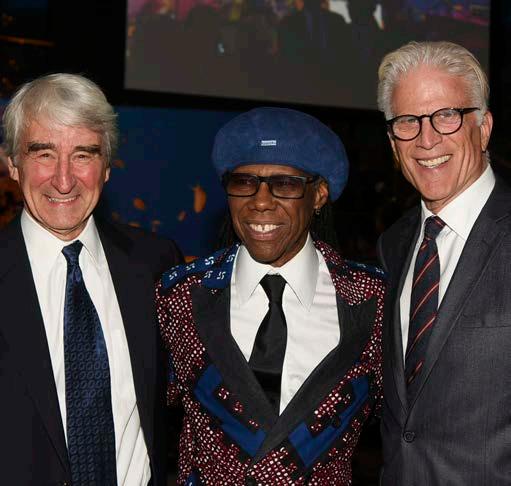
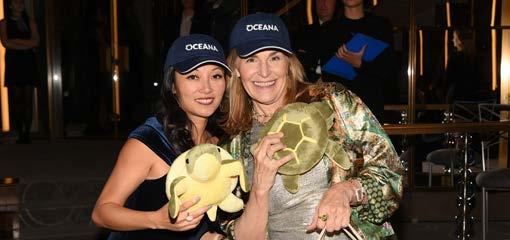
Honoree and Oceana Board member Sam Waterston was introduced by former President Bill Clinton, who recognized Sam’s deep and steadfast commitment to protecting and revitalizing the world oceans. The president continued by speaking about Oceana’s effectiveness at winning policy victories for the oceans. “Organizations like Oceana are making wonderful and real changes, which are literally saving the future,” he said in his remarks.
Morgan Freeman was also recognized for his lifelong commitment to the oceans. A blue water sailor and a longtime supporter of Oceana, Freeman thanked Oceana and the supporters in attendance for protecting the oceans, which he called his “second home.”
Oceana CEO Andy Sharpless rallied attendees to take action in support of the Shark Fin Trade Elimination Act. “We have to end the sale and trade of shark fins in the U.S.,” he told the crowd. “Only then can we be an example to the rest of the world.” Sharpless also previewed Oceana’s campaign against plastic pollution, set to launch early next year.
The event raised over $1.4 million and was held at the Rainbow Room at Rockefeller Center. The gala was hosted by Oceana Board members Susan and David Rockefeller, along with Co-Chairs Violaine and John Bernbach, Sydney Davis, Kay and Frank Fernandez, Loic Gouzer, Kelly and Jim Hallman, Dede McMahon, Regina K. and John Scully; and Vice-Chairs Jo Champa, Xin Li-Cohen and Lyor Cohen, Barbara Cohn, Angela and Stephen Kilcullen, Alexia and David M. Leuschen, Simone and David Levinson, Hassan Pierre, Andy Sabin and Leslie and Robert Zemeckis.
The evening concluded with a rousing musical performance by Nile Rodgers & CHIC, whose electrifying set brought everyone to the dancefloor and included hits like “Le Freak,” “Everybody Dance” and “Get Lucky.”
30
Events
Sam Waterston, Nile Rodgers and Ted Danson
Melony and Adam Lewis
Kay Fernandez and Dede McMahon
©Oceana/Rob Rich
©Oceana/Rob Rich
©Oceana/Rob Rich
©Oceana/Rob Rich



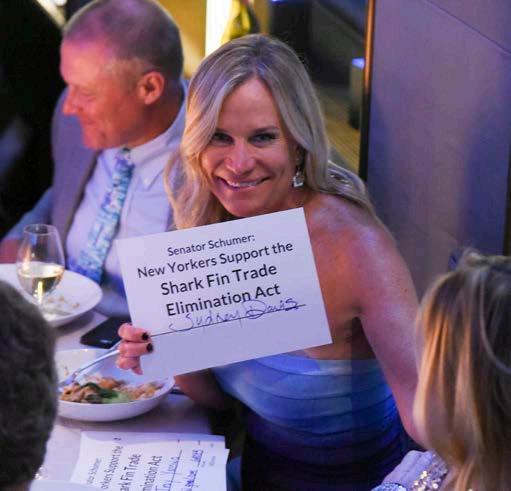
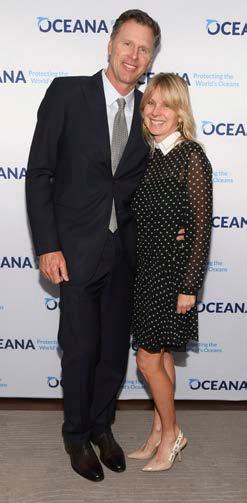

WINTER 2018 | Oceana.org31
Jean Weiss and President Bill Clinton
Morgan Freeman
Sydney Davis
Susan and David Rockefeller Jim and Kelly Hallman
Nile Rodgers & CHIC
©Oceana/Rob Rich
©Oceana/Rob Rich
©Oceana/Rob Rich
©Oceana/Angela Pham BFA.com
©Oceana/Rob Rich
©Oceana/Rob Rich
Fin Win Anchovies
Little fish, big ocean impact
Mark Bittman is an award-winning food journalist, author and former columnist for the New York Times. He is a fellow at the Union of Concerned Scientists and a faculty member of Columbia University’s Mailman School of Public Health.

Anchovies, like other lower-food-chain fish such as sardines and mackerel, are delicious fresh — super-fresh, ideally. But, as you know, they’re most often preserved in salt, and then, again ideally, packed in olive oil, which makes them strong and “fishy,” a flavor that admirers (I’m one) can’t get enough of.
This classic Scandinavian preparation of crusty potatoes and salty anchovies will either appeal to you enormously or make no sense. One of the best-known dishes in Sweden, it’s served at almost every holiday party — logically, if you ask me, because it’s a great snack food. It makes a good side dish for a hearty roast as well.
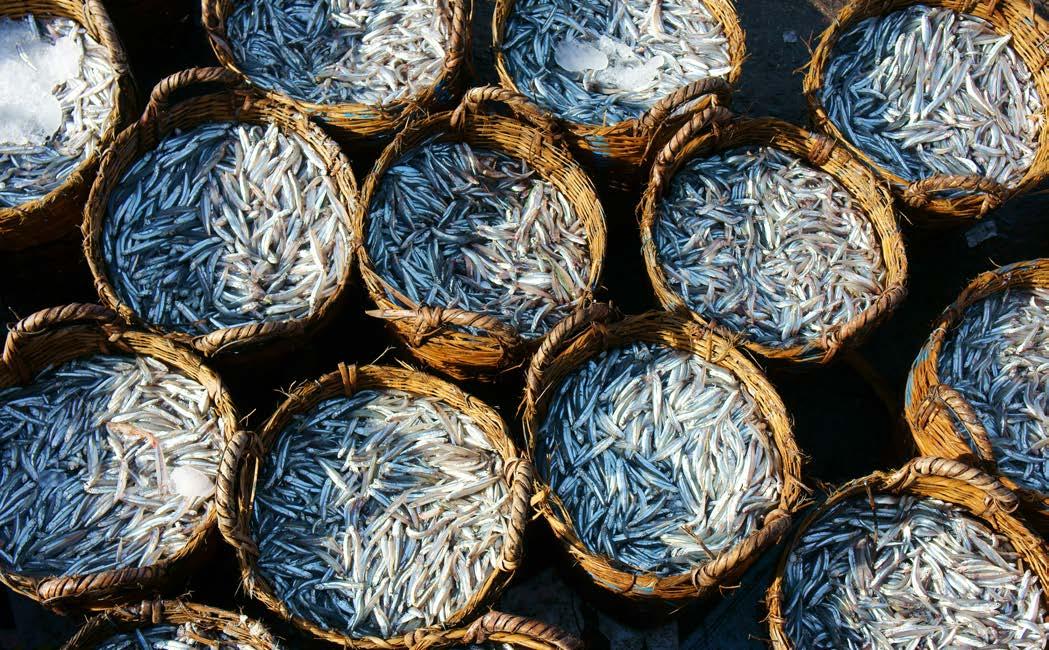
Why eating anchovies makes sustainability sense
Anchovies often occur in vast abundance, sometimes in schools measured in hundreds of thousands of tons. Yet only a fraction of the world’s huge anchovy catch winds up on dinner plates. Most of it is ground up and turned into feed for farmed animals, an inefficient use of a fish that’s high in nutrients and extremely low in mercury.
Catching fish for livestock also encourages overfishing, since fishermen get less money for anchovies destined to feed animals than they do for anchovies that feed people. So, even though it might sound counterintuitive, one way to help anchovies is to eat more of them, while discouraging their wasteful use as industrial fishmeal and oil.
32
©Shutterstock/xuanhuongho
Jansson’s Temptation
Makes: 6 to 8 servings as a snack or side dish Time: 1 hour
6 to 8 potatoes, about 2 pounds
3 tablespoons butter, more or less
2 medium onions, roughly chopped
At least a dozen anchovy fillets (about one 2-ounce tin), chopped
Black pepper to taste
2 tablespoons bread crumbs, preferably homemade
2 cups milk, cream or half-and-half
This recipe is from Mark Bittman’s The Best Recipes in the World.
• Preheat the oven to 375° F. Peel the potatoes and slice them about 1/8- to 1/4-inch thick (I use a food processor or mandoline).
• Place them in cold water to keep them from discoloring.
• Put 2 tablespoons of the butter in a skillet and turn the heat to medium.
• When the butter melts, turn the heat up to medium-high and add the onions.
• Cook, stirring occasionally, until the onions are soft, about 5 minutes, then turn off the heat.
• Butter a baking pan.
• Drain the potatoes and alternate layers of potatoes, anchovies and onions, with potatoes as the top and bottom layers.

• Sprinkle black pepper liberally over each layer; you don’t need any salt.
• Top with the bread crumbs and a few dots of butter, then pour the milk or cream over the top.
• Bake for about 40 minutes or until the top is browned, the liquid is absorbed, and the potatoes are tender.
WINTER 2018 | Oceana.org33
1
2 3
Instructions
©Shutterstock/bonchan
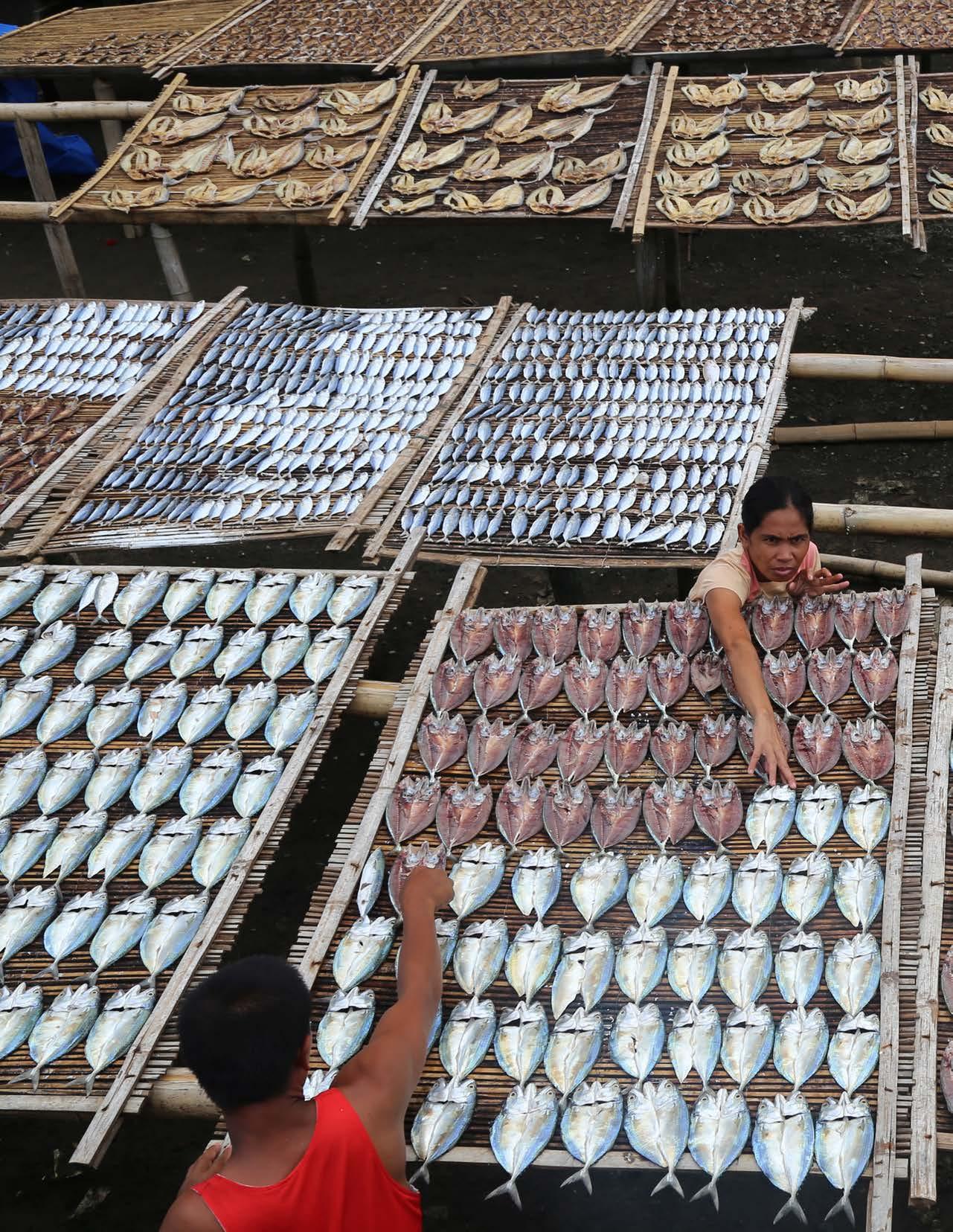
34
©Oceana
Small fish, like these drying in Dipolog City in the southern Philippines, are a popular food in this island nation. Sardines, mackerel and other “bait” or “forage” species are one of the country’s most affordable sources of protein. But overfishing has landed many of the Philippines’ fish stocks in hot water. Sardines, a key species for food security and local ecosystems, are getting smaller and spawning earlier in their life cycles — a clear sign of overfishing. That’s why Oceana is advocating for a national sardine plan that uses science to protect these vital little fish.
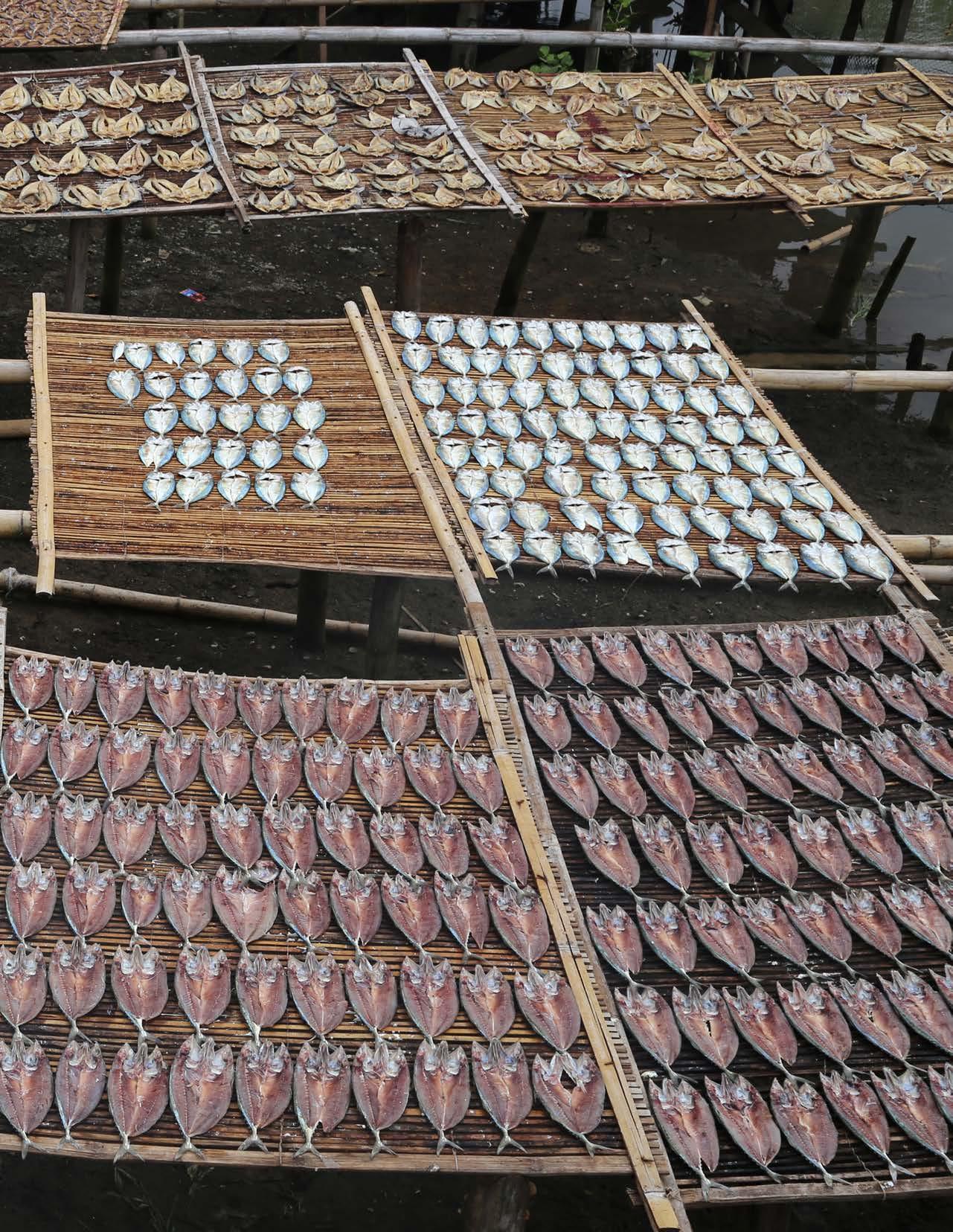
WINTER 2018 | Oceana.org35
Oceana’s accomplishments wouldn’t be possible without the support of its members.
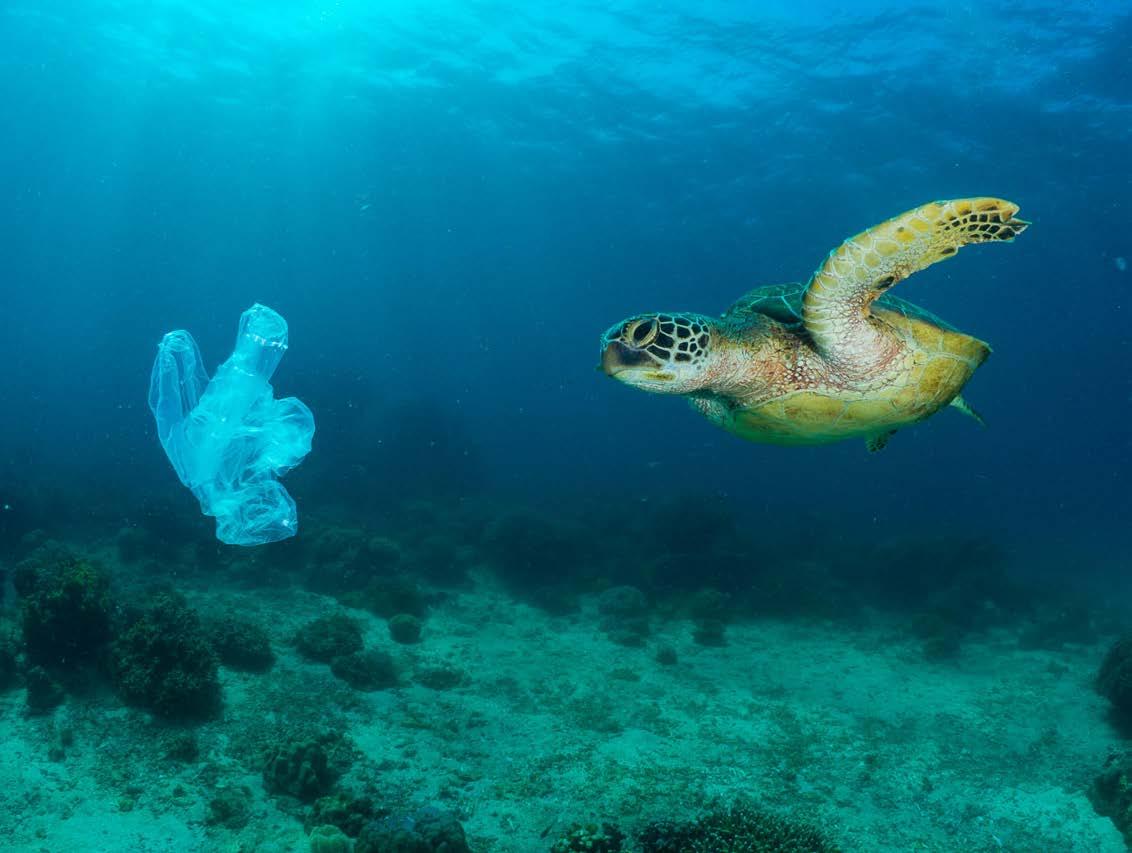
Global | Washington, D.C. Europe | Brussels | Copenhagen | Madrid | Geneva | London South America | Brasilia | Santiago | Lima Asia | Manila North America | Belmopan | Ft. Lauderdale | Juneau | Mexico City | Monterey | New York | Portland |
1025 Connecticut Ave NW, Suite 200 Washington, DC 20036 USA phone: +1.202.833.3900 toll-free: 1.877.7.OCEANA
Toronto Go to Oceana.org and give today.
You can help Oceana fight to restore our oceans with your financial contribution. Call us today at 1.877.7.OCEANA, go to our website www.oceana.org/give and click on “give today” or use the envelope provided in this newsletter. You can also invest in the future of our oceans by remembering Oceana in your will. Please contact us to find out how. All contributions to Oceana are tax deductible. Oceana is a 501(c)(3) organization as designated by the Internal Revenue Service.
Sea turtles often eat plastic bags in place of jellyfish, their natural prey, leading to health problems or death.
©Oceana/DanielOcampo
FSC Logo

































































